20 Extended Questions: Yasser Bilgrami

How Important Is Language In Learning An Art?
Long Har
Ch’uan: The Lateral Method


Bari 2023: Developing The Fundamentals A Report
Asian Medicine Series: The Web of Chi And The Human Body A Fighter & A Painter
Two Fundamental Sai Techniques Strengthen Your Kicking Muscle - Rectus Femoris The Matching And More…

volume 26 June 2023
Editor Nasser Butt
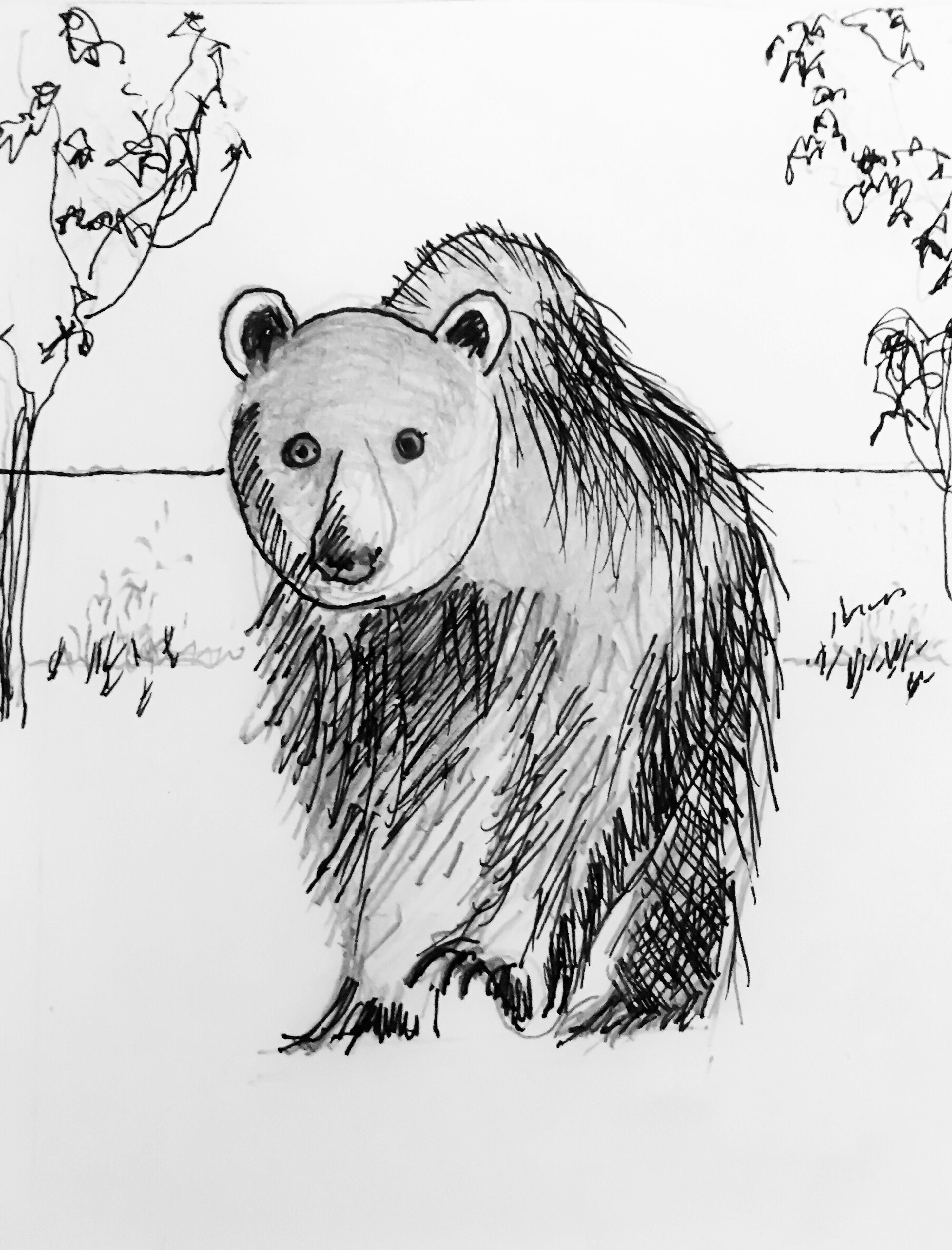
perception realization activation action
Hands The Internal Arts Magazine Volume 26 June 2023 L’orso Solitario Editor Nasser Butt
Lift
Published by L’orso Solitario Books, Leicester, United Kingdom
Lift Hands
The Internal Arts Magazine Volume 26 June 2023
Editor Nasser Butt
Copyright © by Nasser Butt, 2023 & Fa-jing Ch’uan Internal Chinese Boxing Schools
Nasser Butt asserts the moral right to be identified as the editor & owner of this work.
All rights reserved. No part of this publication may be reproduced, stored in a retrieval system, or transmitted in any form or by any means, electronic, mechanical, photocopying, recording or otherwise, without the prior permission of the editor.
Waiver of Liability: The publisher assumes no liability for the use or misuse of information contained within this book. By purchasing or electronically downloading this publication, the reader hereby, waives any and all claims he or she may have now or in the future against Nasser Butt and Fa-Jing Ch’uan Internal Chinese Boxing Schools or its affiliates.
The points of view represented here are solely those of the authors’ concerned. You do not have to subscribe to them if you do not wish. Nor is their inclusion here necessarily an endorsement by Fa-jing Ch’uan Internal Chinese Boxing School or its affiliates.
Cover
Back Design: Copyright © Nasser
Cover Photo [Main]: Monica Mitoli — Photo Credit:Nasser Butt; [Inset]: Yasser Bilgrami — Photo Credit: Yasser Bilgrami
Design © Nasser Butt, 2023
Butt 2023
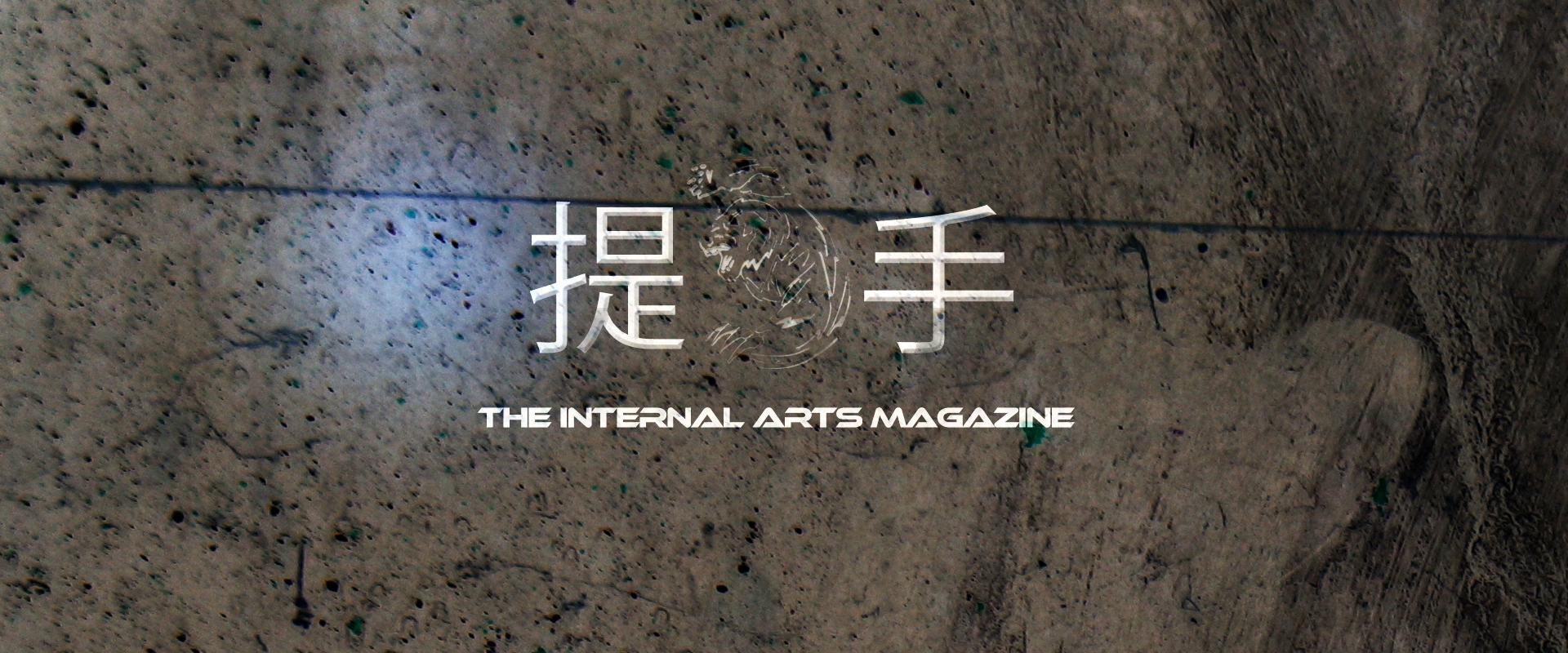
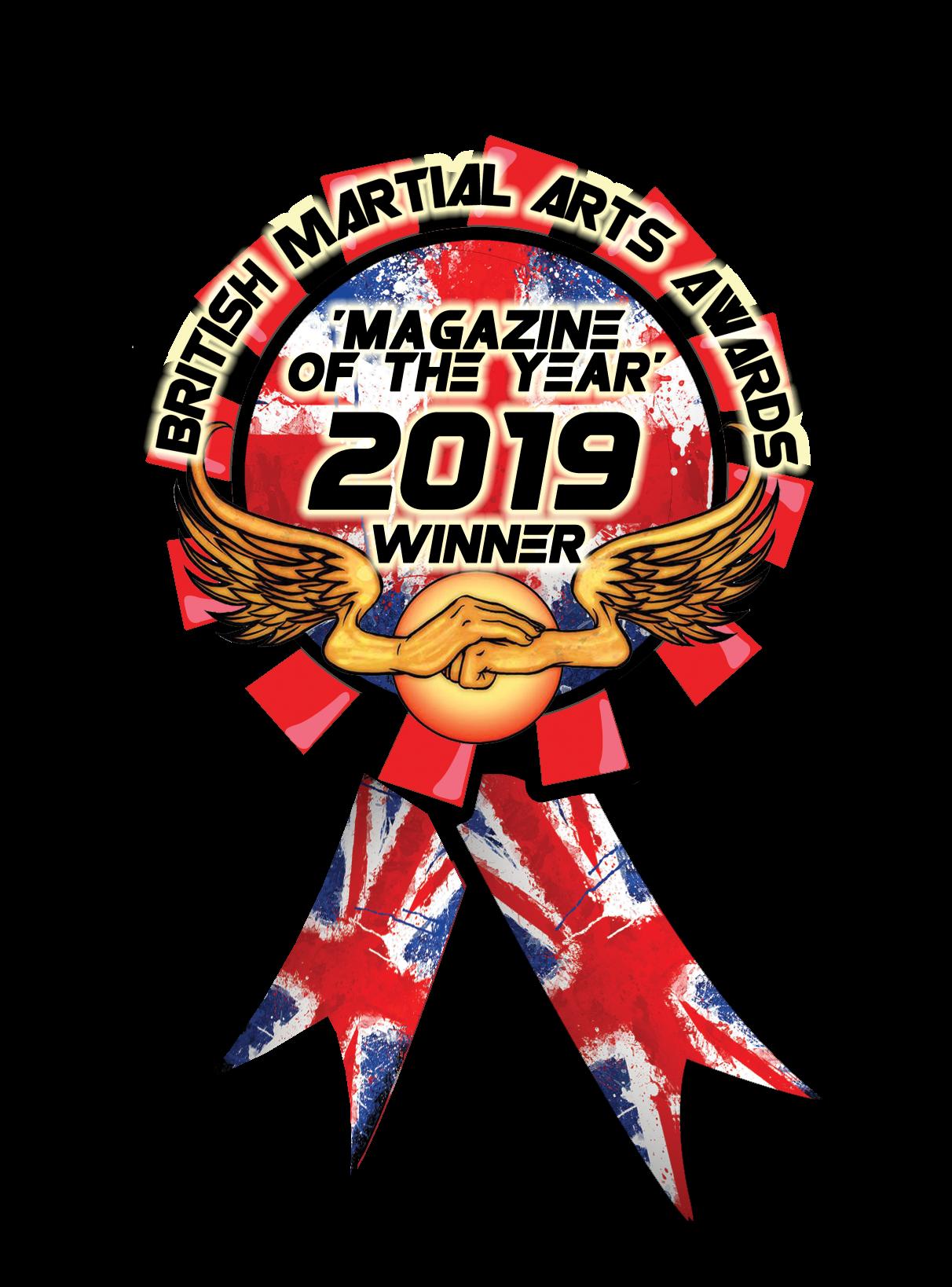

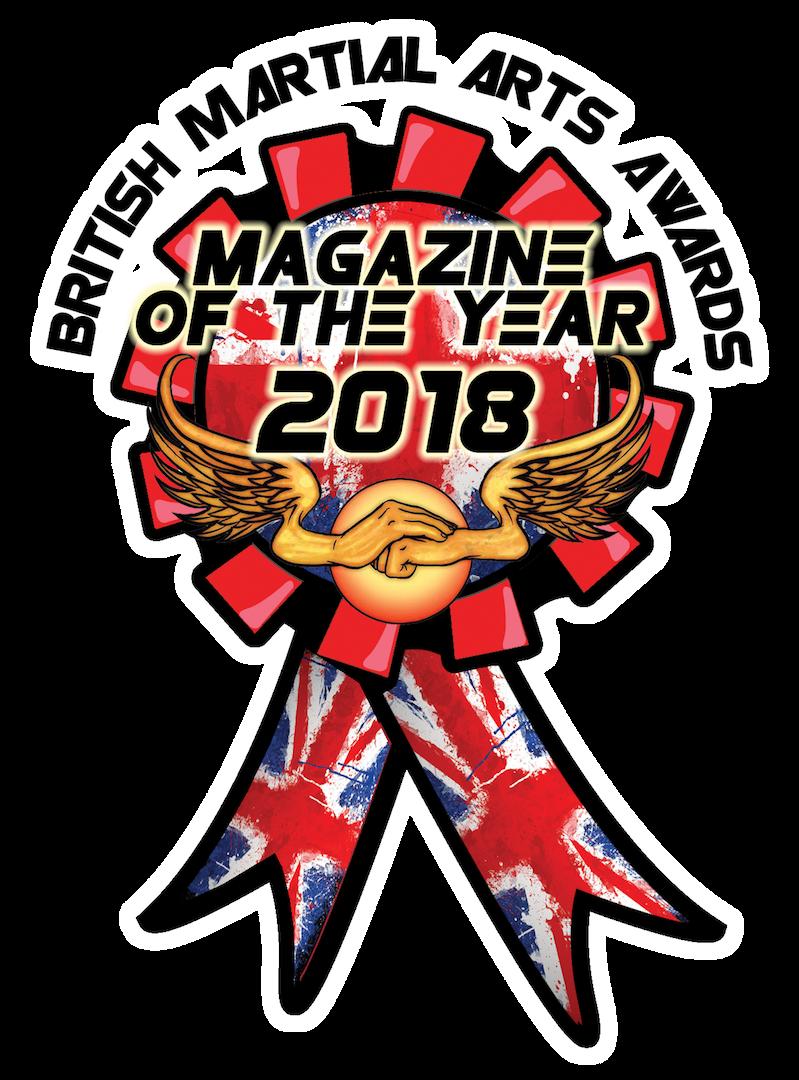

Celebrating 7 Years of the Multi-Award Winning Internal Martial Arts Magazine lift hands June 2023
Editor’s Note
The House of Mouse
The Art of Amy Faulkner
The Matching
Alan Sims
Two Fundamental Sai Techniques
Katherine Loukopoulos
Strengthen Your Kicking Muscle — Rectus Femoris
Colin Power
Fa-jing Ch’uan Dim-mak Training Methods Part Three
Nasser Butt
A Fighter And A Painter
Andrea Bucher
20 Extended Questions with Yasser Bilgrami
How Important Is Language In Learning An Art?
Wilma Scheucher
This Lonely Journey
Dr Gregory T. Lawton
Long Har Ch’uan — Dragon Prawn Boxing Part Two
The Lateral Method
Nasser Butt
Camp 2023 Details
Asian Medicine Series: The Web Of Chi
Dr Gregory T. Lawton
Bari, Ahoy! Italia 2023 — A Report
Page 9
Page 12
Page 15
Page 21
Page 32
Page 38
Page 45
Page 55
Page 66
Page 68
Page 72
Page 81
Page 83
Page 95
Peasant Talk: Who Is In Your Kwoon (Dojo)? Page 126
Useful Contacts
The Art of Louiseneige Be
Lift Hands Magazine Digital Purchase Links
Page 128
Page 129
Page 132
6
contents

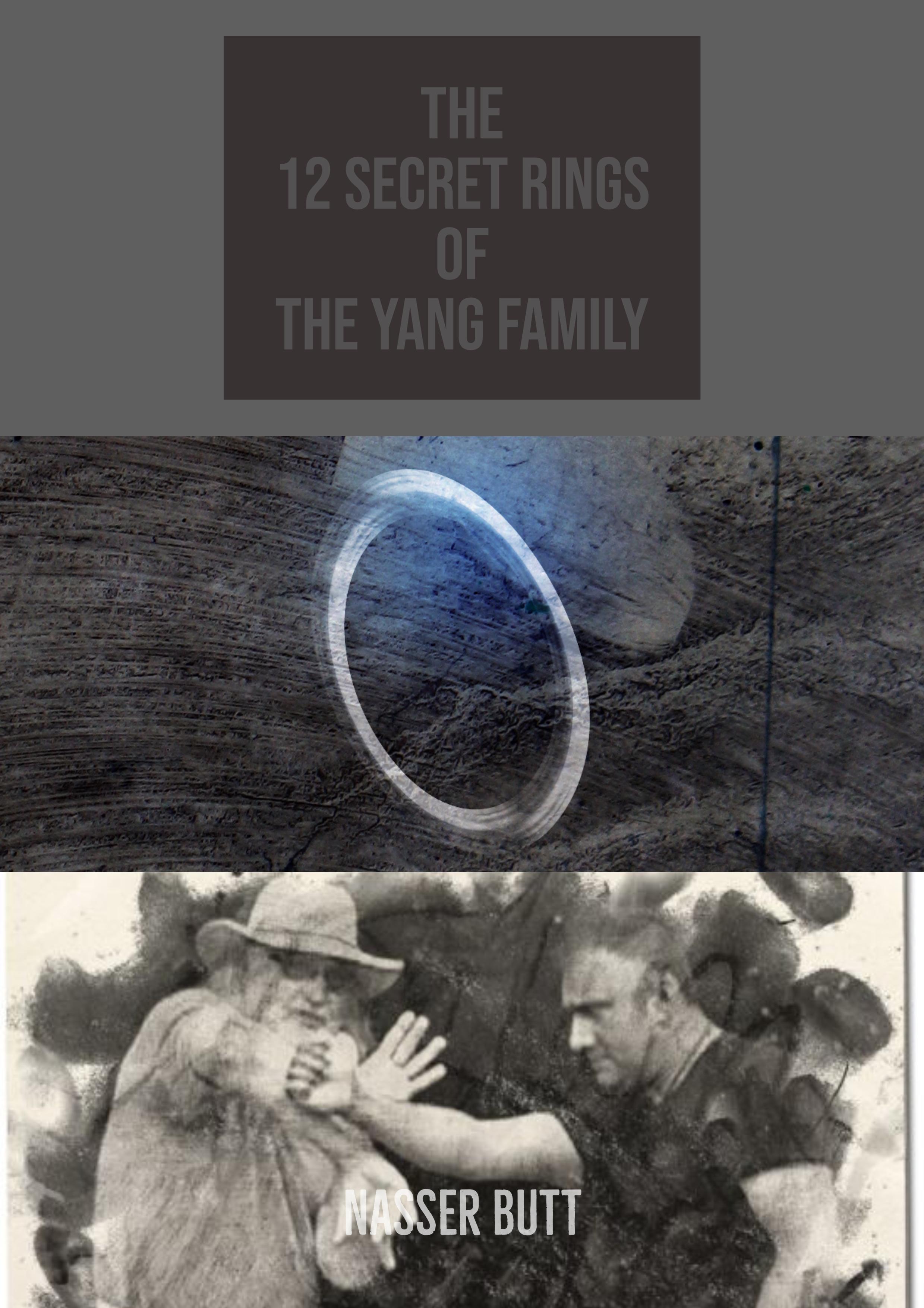






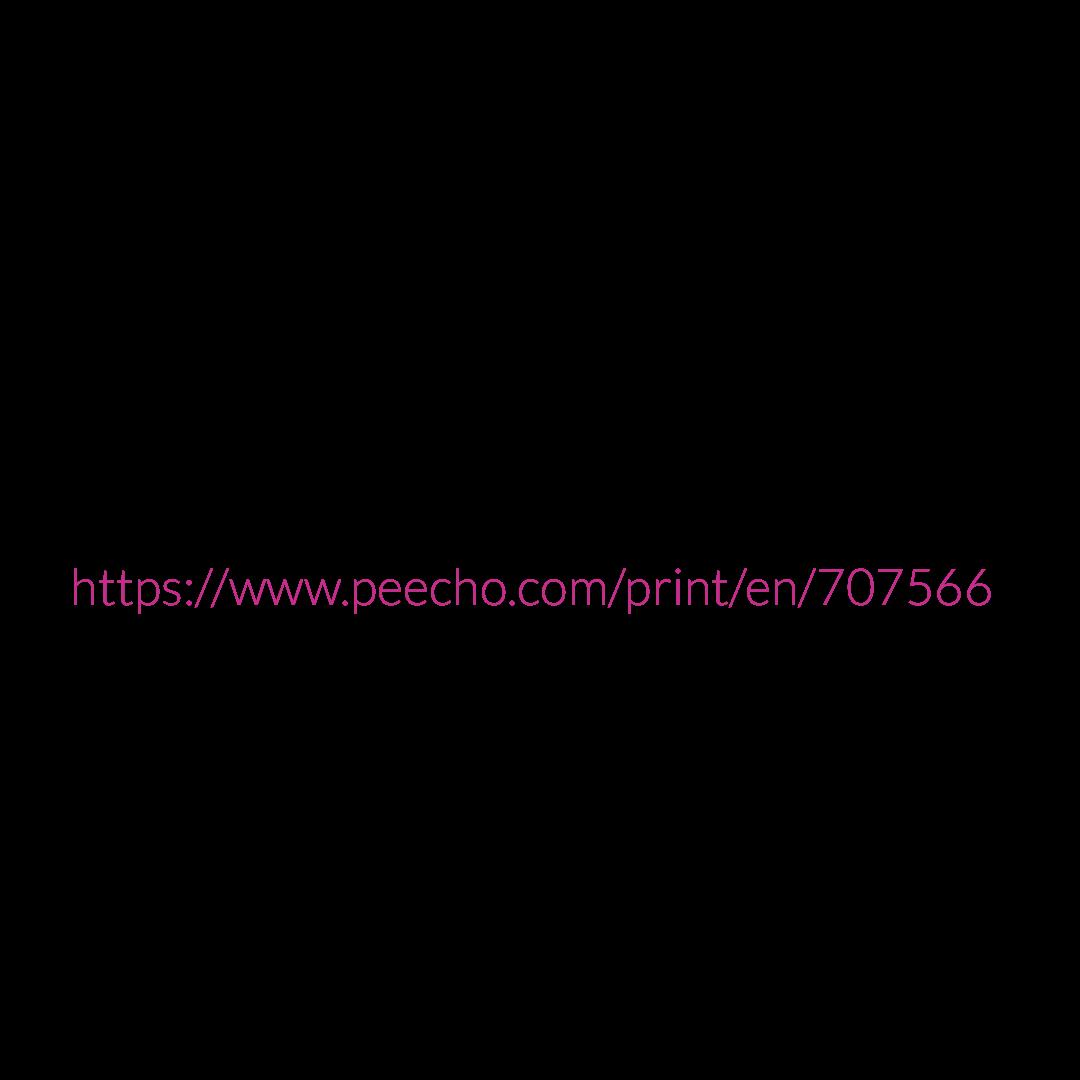
English Edition Link Italian Edition Link
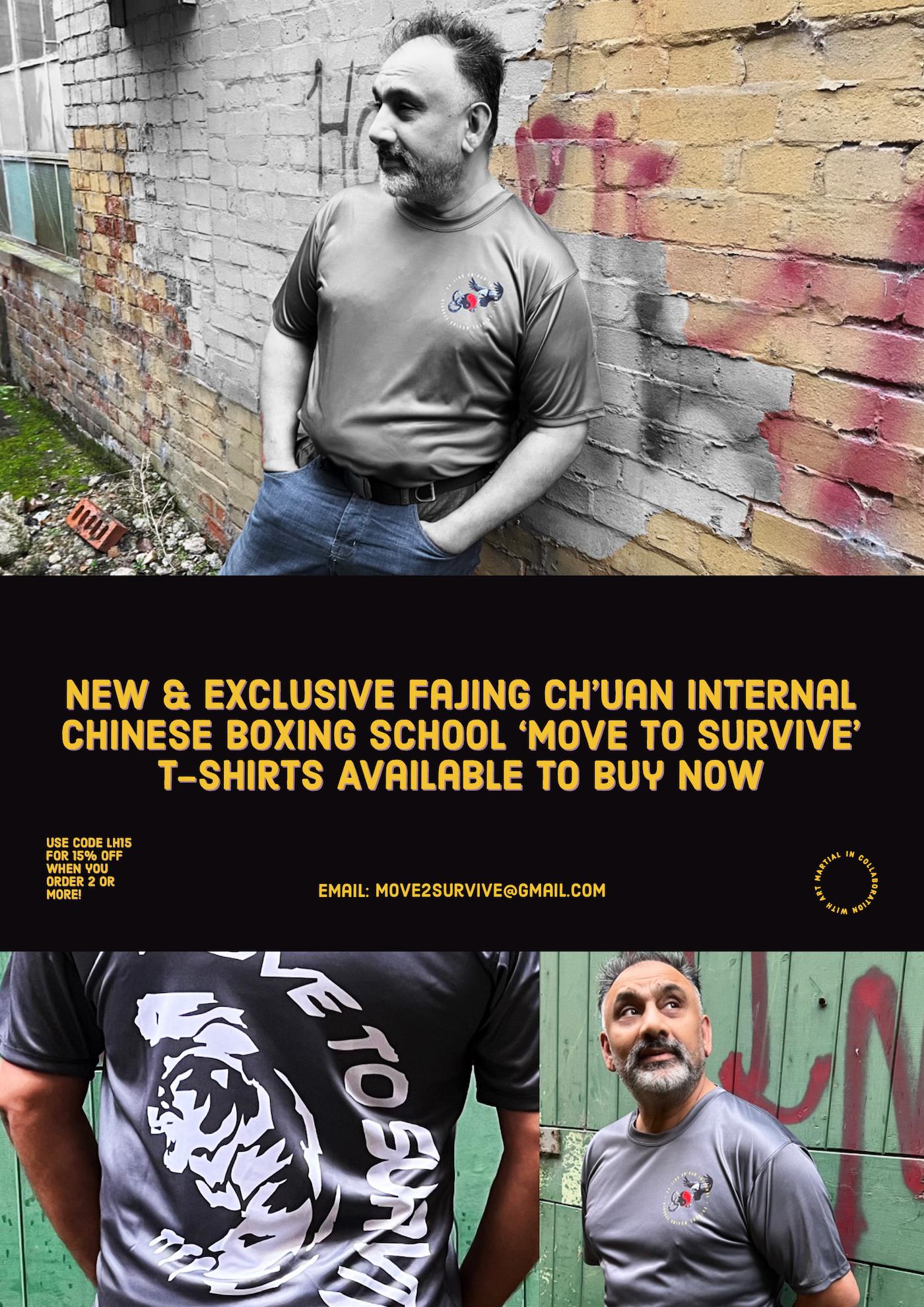

Note
Welcome to Volume 26 of Lift Hands Magazine!
I hope that you are basking in the summer sunshine wherever you happen to be and have had a good year thus far.
May and especially June have been extremely busy months. I had suspected already that June would be the one that may cause a slight delay to the publishing of the current issue — it did! However, luckily, the delay was not too long.
There were many events happening over the past few weeks. June saw Kaizen Adrenaline return to Nottingham at a new larger venue. We will have a report with Lucci Del-Gaudio [LDG] hopefully in the September issue. Further, the beginning of July gave birth to a brand new 3 day event — The Festival of Martial Arts. Again, I’m hoping to interview the 2 brains behind that event — LDG and Matt Stait for the next issue as well.
Further, we will be introducing a ‘Book Review’ segment from the September issue onwards. So, if you have any good books to review — please forward your reviews to myself via the usual channels.
The current issue is once again jam packed with absolutely amazing articles!
Katherine Loukopoulos Sensei has produced another brilliant article from her archives with some amazing photos and once again, a couple of her students have stepped up with two excellent articles of their own.
We have another excellent article by Colin Power — a must read if you like to kick things!
Dr Greg Lawton continues with his amazing Asian Medicine Series. I cannot emphasise enough that those who are interested in the healing aspects, read this. As I mentioned in the previous Note… Dr Lawton has kindly provided the readers of Lift Hands with a certification program for those who complete the study modules provided at the end of each article via an online link.
I would like to thank Yasser Bilgrami Sifu for taking the time out of his extremely busy schedule to answer our 20 Questions. 20 Questions is one of my favourite segments of the magazine. It still amazes me how the same questions produce such a diversity of answers.

I managed to grab some serious talent to answer our 20 Questions at Kaizen. These will appear in the September and December issues. I promise you, you will not want to miss any of those!
I’m going to be busy prepping for my August Camp here in Leicester and once that is done, I’ll be back in editing mode for Volume 27 appearing in September.

Please keep your articles coming in. Lift Hands has developed its own niche readership around the world, and folk are really enjoying reading ‘old school’ articles with solid information and heart — this is what separates us from the rest.
My thanks to everyone who has contributed and helped with the current issue, both with articles and behind the scenes.
See you all in September and have a safe and fun-filled summer!
Happy training
9 editor’s
Nasser
Nasser Butt
105 Countries

31K Readers
Albania
Algeria
Argentina
Australia
Austria
Azerbaijan
Bangladesh
Belarus
Belgium
Bolivia
Bosnia & Herzegovina
Brazil
Bulgaria
Cambodia
Canada
Chile
China
Colombia
Costa Rica
Cote D’lvoire
Croatia
Cuba
Cyprus
Czechia
Denmark
Dominican
Republic
Ecuador
Egypt
Estonia
Fiji
Finland
France
French Guyana
Gambia
Germany
Ghana
Greece
Guatemala
Hungary
Iceland
India
Indonesia
Iran
Iraq
Ireland
Israel
Italy
Japan
Jordan
Kazakhstan
Kenya
Korea
Kuwait
Kyrgyzstan
Laos
Latvia
Lithuania
Macedonia
Madagascar
Malaysia
Malta
Mauritania
Mexico
Moldova
Morocco
Mozambique
Myanmar
Nepal
Netherlands
New Zealand
Nigeria
Norway
Oman
Pakistan
Palestine
Paraguay
Peru
Philippines
Poland
Portugal
Qatar
Romania
Russian Federation
Saudi Arabia
Serbia
Slovakia
South Africa
Spain
Sri Lanka
Sweden
Switzerland
Taiwan
Tanzania
Thailand
Tunisia
Turkey
Ukraine
UAE
United Kingdom

USA
Uruguay
Venezuela
Vietnam
Zimbabwe
10



12


Acouple of years back, a great martial artist from Harlem New York passed away.

That person's name was Abdul Musawwir. While we weren't particularly close, he is the reason for the particular title of this article. I basically don't like titles such as master or grandmaster, but if anyone was a grandmaster of martial arts, Abdul would easily qualify for that title.
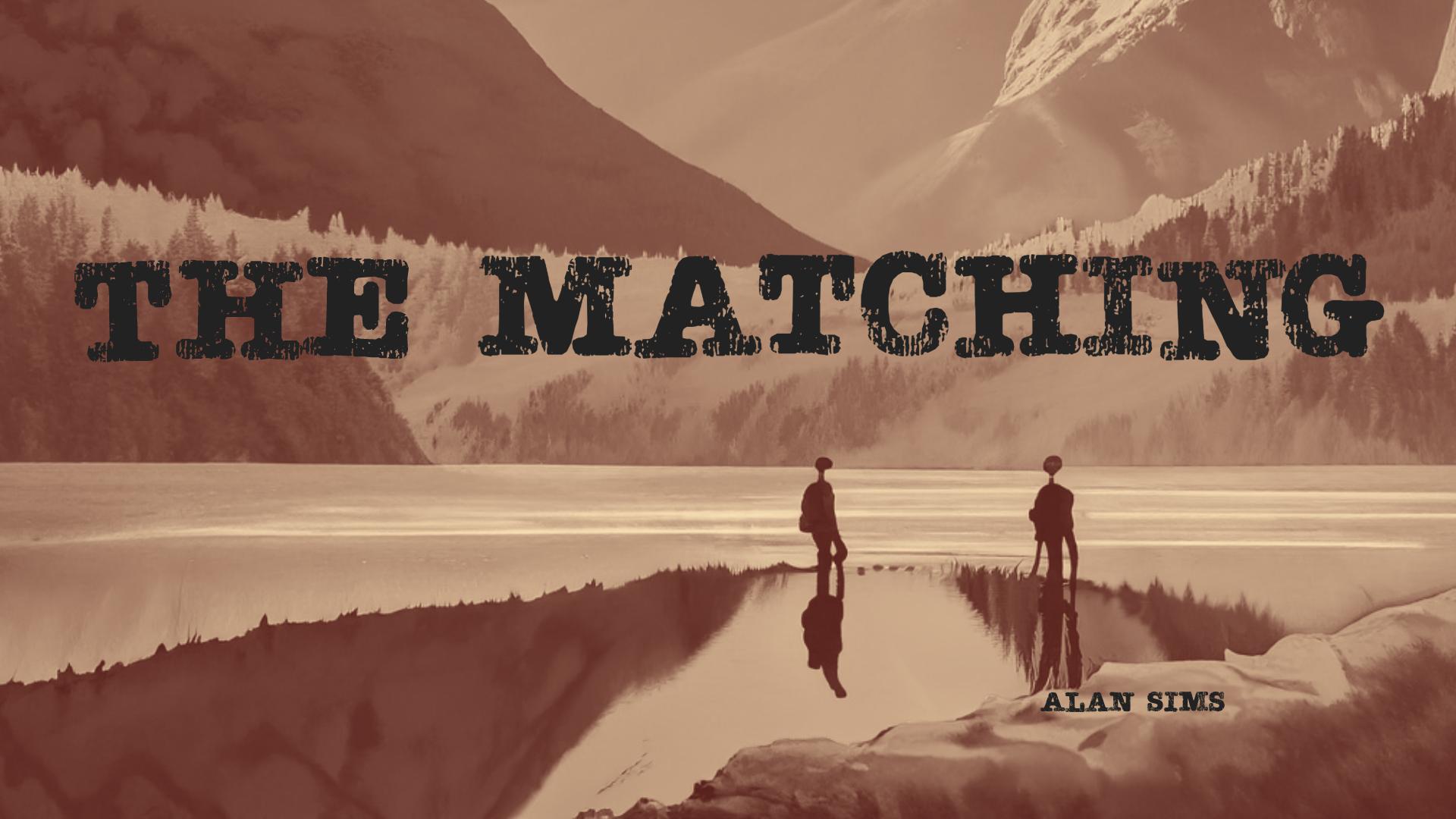
He trained with an illustrious group of people who were probably grandmasters themselves, we ended up meeting under the tutelage of Master Jou, Tsung Hwa. Once, a very long time ago, Abdul had a school way on the East side in Harlem. This had to be about almost 4 decades ago. He had previously asked me if I knew Taiji Sword to which I replied yes. I was invited to his studio where there were only the two of us. He sat on a high chair and asked me to demonstrate the form, which I did. I remember that the floor was extremely slippery, and I was wearing rope soled kung fu shoes at the time. He then asked me to do it again and I repeated it a 2nd time. I don't remember what happened after that, but it was interesting. No one was at least openly playing the authentic forms that we were learning from Master Jou at the time. We only started calling him Master Jou, after the Taiji Farm was initiated around 1984. Abdul and I would run into each other from time to time, but not in Harlem.
Being that instructors in the Black community as a whole don't or didn't socialize that much except possibly if they lived in the same neighborhood. My instructor Larry Banks and I weren't really involved in the Harlem scene, as Larry didn't need the money anyway working in the film business and being honored at the Schomburg having shot the movie "Juice" and also working with the likes of Forest Whitaker on "Strapped". Although I did have a few disagreements with Abdul, I did have a particularly nice talk with him when I was inspired to visit him unannounced in a part of Central Park in Harlem.
15
Grandmaster Abdul Musawwir. — 2014 St Nicholas Park, West 135th Street, New York, NY, USA
Photo Credit: Ever Loved/Russell Crowley
I had wanted to show him what I call "The Dao Of Movement". It is the culmination of my having practiced up to about 5 fist sets in 3 different styles of Taijiquan. The class was basically leaving, and after a while he and I were alone. He had this walk to make and so we walked together while I carried his bag. He asked me if I knew the 2 person barehanded form to which I replied yes. I could do both sides [A&B] by myself, and possibly stumble through it with someone who was very good at it at that time.
Anyway, I wanted to talk to him about a group or system of exercises that Master Jou had taught, but I couldn't remember the name of them. Mike Goldstein who remembered everything that Master Jou had said, didn't seem to know! Bob Arietta, who probably did the exercises the best clearly didn't know, but as I was struggling to get the subject across to Abdul, he said, "Oh yeah, the matching!” I have written about this a little previously. During our walk through Central Park, I remember Abdul Musawwir stating to me that he felt that he had been used in what I believe was a series of events, and that he wanted to do something in the Bronx [which he did]. He also said to me that he wanted to give workshops more than teaching classes, and I think that he said that he was getting tired of traveling so much. Larry Banks had previously once told me the same thing.
I have pretty much stopped practicing form, and one reason is that after working with stances intensely and mastering the art of totally formless movement, I have in a sense gone beyond it into unknown territory. In this instance though, I initially wanted to move in a way of being able to deal with all types of martial artists in terms of sparring, but "The Dao Of Movement" deals with the Dao of all movement. Be it dance, sports, martial arts, choreography etc...
Now, I find myself entering something even more mysterious. I want to and have been creating variations of master Jou's Torso Method Exercises. I don't even know what I'm aiming to accomplish this time!

16
Photo Credit: Carl Albright /Ever Loved


18



The Sai, [Japanese 釵, lit.☐'Hairpin'; Chinese 鐵尺, lit.□'Iron Ruler’] is a traditional Okinawan stabbing weapon used for stabbing and striking.
It is primarily used in ninjutsu and kobudo, as well as in southern Chinese martial arts. The basic form of the weapon is that of a sharp metal prong with two sharp and curved side prongs (yoku) projecting from the handle (tsuka). There are many different types of Sai with varying prongs for trapping and blocking.
Source: Wikipedia
Before its creation on Okinawa, similar weapons were already being used in other Asian countries including India, Thailand, China, Vietnam, Malaysia, and Indonesia.
Source: Donn F. Draeger & Robert W. Smith (1969). Comprehensive Asian Fighting Arts. ISBN 978-0-87011-436-6.
On Okinawa, the Sai was used by domestic police (ufuchiku) to arrest criminals and for crowd control. Use of the Sai in Japanese martial arts was improved in 1668 by Moto Chohei, an Okinawan prince.

Source: Kanenori Sakon Matsuo. The Secret Royal Martial Arts of Ryukyu. BoD – Books on Demand, March 31, 2005.
Alot has been written about the origins and multitude uses of the Sai. In Japanese language there is no plural; a single Sai or many Sai is understood from the conversation context. Suffice to say that the Sai comes in a pair; therefore two Sai (one on each hand). Often a third Sai is concealed behind one’s back.
Nowadays we wear a Karate Gi with a belt. The third Sai is secured behind one’s belt which is made from a thick material, and passes around the waist two times. In the days bygone how was it concealed? This leads me to believe that depending on the clothing one could or could not secure a concealed third Sai. Also, it would make a difference of the Sai’s size and/or weight if it could easily be concealed or not. Nevertheless, it was done!
22
Two Policemen catching a criminal with their Sai
Photo Credit: SOAS University of London
There are 13 Okinawan Sai Kata approved for tournament competitions on Okinawa; plus, many other Kata which are not on the list.
Source: http://okic.okinawa/en/archives/news/p1140
All the Sai Kata share the same basic fundamental; that is, in order for Sai to work as a weapon, extending it, and retrieving it needs to be executed blindly fast, and laser beam accurate.

Nakahodo Tsudomu Sensei of Uechi Ryu Karate Do has a perfect extension of the attacking arm. If one draws a line from the tip of the Sai to Sensei’s eyes, one can observe the piercing laser beam of the attack is a straight line. At the same time, if we magnify the photo, we can see the Sensei’s little finger is not on the Sai because he is already getting ready to retrieve it. Sensei’s left hand is fully pulled back as well as his hip. In other words, already he is getting ready for his next motion. This technique is contained in all Sai Kata because this is the function of the weapon.

23
Photo Credit: Unknown
Tribute to pioneer Dan Nagle seen here with Shimabuko Tatsuo Sensei.
Photo Credit: Unknown
Chikin Shitahaku Nu Sai, Chatan Yara nu Sai, Hamahiga nu Sai, Tawata nu Sai, Kugushiku nu Sai, Yakā nu Sai, Sai I, Sai II, Sai III, Ishikawagwa nu Sai, Nichō Sai, Sanchō Sai, and Shinbaru nu Sai
Use the long portion of the Sai for blocking and attacking against a long weapon; thus, one can maintain a safe distance from the opponent.
Use the hooks to hold off a potential sword or other short weapons BEFORE their hands are extended. That means we need to dive into the opponent. Try this when the sword or dagger is razor sharp… do we have the guts to do it? Therefore, we need to make our Sai practice realistic, and give meaning to each move of the kata.


24


25
Photos
1
6 indicate a possible Bunkai. There are myriad of possibilities, and many to be discovered.

Partner’s name: Kenneth L. Caputo

26
#
to #
Photos Credit: Paul E. Truesdell Jr.




Previous pages:
1. Getting ready for the throw; eyes maintain contact with the target.
2. We make a large circular motion close to our body while fingers are already getting ready for the throw motion.
3. Please notice that the elbow points inward towards the body.
Photos # 1 to # 4 indicate the position of the hand during the throw motion.
We need to remember that when we release the weapon, it is the same as when we follow through in bowling, or when we throw the ball in baseball.

31
Photos Credit: Paul E. Truesdell Jr.
Katherine Loukopoulos
15 May 2023
Bubishi Team Austria
Matayoshi Shimpo Sensei of Matayoshi Kobudo practices throws.
Photo Credit: Andrey Coulombe
Today we are going to look at a very important muscle used in kicking activities such as football and most martial arts - rectus femoris. This muscle is one portion of the thigh muscles commonly called Quadriceps or Quads that has some interesting aspects that separates itself from the other Quad muscles ( Vastus Medialis, Vastus Lateralis and Vastus Intermedius ) The quadriceps are the major muscle group of the anterior thigh. This muscle group consists of four separate muscles that converge together to form a common tendon that attaches to the superior patella. While the main function of this muscle group is knee extension, it also plays an important role in knee stabilisation and hip motion. The quadriceps muscle group is susceptible to both overuse injury (tendinopathies, strains) and severe injury (tendon tears, compartment syndrome). Rectus femoris is both a hip flexor and knee extensor and has a higher incidence of injury in kicking activities possibly due to the need to perform these movements as well as stabilise the pelvis on the femur in weight-bearing.

Muscle strain injuries usually occur during eccentric muscle action, that is when the muscle is contracting and lengthening at the same time. The rectus femoris has been found to be one of the main force generating muscles in kicks such as the round house kick and is active over a long duration. In another analysis of various taiji movements the rectus femoris was shown to have a high level of activity mainly acting eccentrically. As the rectus femoris traverses two joints it may leave it more prone to injury when it is frequently required to work in an eccentric action for kicking and other martial movements.
Training muscles for injury prevention is a complex task and requires a multi-faceted approach to address core muscle strength, endurance, and recruitment requirements for functional demands associated with daily activities, exercise, and sport. Although quadriceps strains related to kicking were thought to occur on the kicking leg side, controversy exists as to whether rectus femoris muscle strains primarily occur during contact, swing phase of kicking or ground contact phase during the step before the backswing.
During contact phase the rectus femoris is in a relatively shortened state and muscles need to be in a relatively stretched state to be injured so it is not likely that the contact phase is where the injury occurs. During the backswing phase the muscle acts to decelerate the hip extension and knee flexion. This is when the muscle is likely to be injured. Another likely time is when the support leg receives the highest forces from the ground. The body leans backwards with the leg moving farther behind than normal. The support leg and the kicking leg are both at risk when the muscle is elongating under load.
To strengthen the quads and target rectus femoris to improve performance and potentially reduce injury is rather complex. Many aspects are involved in both performance and injury prevention and I am not going to imply that we have cracked the code for these areas however if injury is more prevalent when a muscle is eccentrically loaded (lengthening under load) then it may be best to start targeting your exercise to reproduce this movement. Movement is complex and injury as well as high performance may happen when we are not doing a technique or movement perfectly. It may be worthwhile adding some training of muscle groups in a non-optimum position such as slightly off centre or incorrectly balanced. We don’t want to over train incorrect technique however it may be important to understand how to get out of a bad position. Some martial arts may already have training methods that are designed to teach you how to get out of a bad position (or choice) such as Da Lu in Taijiquan.
32
Start slow and easy when introducing any new movement or group of movements then make them more complex. I like to start any new movement, especially if the person is injured or weak in that area, with a static (isometric) posture then progress into a dynamic (eccentric/concentric) expression. To put the icing on the cake you can play with adding an upper body component whilst targeting a lower body muscle group such as holding your hands in the air whilst doing a reverse lunge. Later a weighted object can be added (ball, stick, club, sword).
Let us look at two exercises to target the rectus femoris that makes it work in a stretch shortening cycle.
Reverse Nordic hamstring — is a knee dominant exercise starting in a kneeing position on a soft pad or floor. The ankle is in a fixed position and you slowly lower yourself backwards with the muscles of the quadriceps contracting as they lengthen followed by an explosive return to start position. If you have difficulty with this version it may be best to start with an isometric or static hold for 10-30 seconds at the level of backward lean that you can achieve.
Key points to remember: brace your entire body for this exercise and be mindful to brace your gluteal (bum) muscles so that you do not collapse or fold at the hip. Progress with repetitions slowly as most people will be weaker than expected.


Overhead reverse lunge — this is an example of a multi-joint quadricep dominant exercise. The starting point can be with both feet on the ground or with one foot on a raised platform and your hands could be by your side or raised overhead. Stand with one foot on platform and step backward into a reverse lunge position and then explode back to start position. If you have access to slides (slide pads or slippery socks) you can slide your back foot into the lunge position and you then slide yourself back to start position.
Key points: reverse lunge will be kinder to your knee than a forward lunge especially if it is an older knee. You could alternate lunge leg and walk backwards across the room holding a stick or weighted object above your head. You could also drive your lunge leg past the start position into a high knee position as an alternative.
33
I have tried to give you a few examples of exercises that you can use to develop your quads and especially rectus femoris without the need for too much equipment. Have fun and play around with your own variations. Next article we will look at using the Reverse Nordic in combination with a hamstring stretch to improve your hamstring flexibility.


Photography Lauron Power
Title Image: Housewife Giving Kick By ArtFamily Source: Adobe Stock
Title Design Nasser Butt
34




Introduction
The Fa-jing Ch’uan Dim-mak Training Methods are an integral component of The Erle Montaigue System. These training methods were designed to teach a student the foundations of fa-jing, combined with dim-mak at both a theoretical and practical level. Further, they helped develop mind-body coordination, timing, the point of coordination, as well as attacking targets at a reflexive level.
There are 10 of these training methods in total. Each method increases in complexity and skill. Usually, students were only given a single method to practice and only after successful execution and understanding was the next one given. Each method is practiced on both sides. Some of the methods are trained 4* ways, whilst others only 2.** All the methods have a solo component, followed by a two-person method.
Each method requires that the body be totally loose — this does not mean that you hold it like a limp noodle, you must have internal tension in order to hold structure.
It is, of course, impossible to show the explosive nature of these methods using still photography since they literally take a split second to do and would simply be a blur. For those who are interested in learning these methods, it is best to seek out a teacher who is well-versed with them and can execute them as they are intended.
The students should not view these as techniques! They are training methods, which when understood will lead the student on to higher things. However, it is important that students don’t kid themselves! Evaluate your progression correctly. Don’t rush through these methods, because just when you think that you have understood one, to the diligent student, it will offer more!
The purpose here is to simply introduce these methods to the beginner, as well as to provide a reference point for those students who are already training under The Guild with either myself or Peter Jones.

A word of warning… the areas being targeted are extremely dangerous and can be fatal or cause serious injury! At no point should any of the primary target actually be struck [especially those located on the neck, eyes, the back of the head and the face in general]. Pull your strike in training! Power can be executed in the solo drill and or upon mitts with a partner.
All the images are shown statically for illustration purposes only with movements exaggerated for visual clarity! ———————————————-
38
* Right foot, right hand lead; Right foot, left hand lead; Left foot, left hand lead; left foot, right hand lead. ** Right and left side.
Method Seven — An open to closed side method

Solo
Starting with a reverse bow stance, simply allow your hands to hang in front of you in p’eng/hinge [Figure 1]. Your waist does a rapid fa-jing shake, turning left, right, left, right —causing the left elbow to strike twice downwards and slightly backwards [Figures 2-3]. Your body turns to the left, as your left hand hooks and your left leg steps around to the back, your waist now does a second fa-jing movement — left, right, left — causing the right palm to pump forward, followed by the left [Figures 4-6].





The solo drill is practiced explosively marching up and down the hall on both sides 4 ways or it can be performed in a circle.
Two-Person Method

Points struck are Gallbladder 20 [GB20].
Gallbladder [GB] 20
39
Figure 1 Figure 2 Figure 3 Figure 4 Figure 5 Figure 6
Your partner shoots at your waist, your waist shakes violently, as the left elbow strikes GB20 twice in rapid succession [Figures 7-10]. As your left leg swings backwards, your body pivots to the left, with the fingers of your left hand hooking into the eyes*. Your waist carries out a second fa-jing shake, causing the right and left palms to strike GB20 [Figures 11-12].












* The left hand can hook the eyes, or alternatively grab the hair or even the ear to yank the head violently.
Method Eight — An open-side method
Solo
We again start in a reverse bow stance with your arms just hanging in front of you [Figure 13]. Your waist turns left causing your right palm to circle up, followed by the waist turning to the right, causing your left palm to circle up, as your weight sits slightly backwards [Figures 14-15]. As your waist turns to left again, your right palm comes forward with your thumb loosely ‘tucked’ in [Figure 16A], and with the right turn, the fingers of the left hand shoot forward, [Figures 16-17]. All the movements are done with a violent shake on the count of one!
40
Figure 13 Figure 14
Figure 16
Figure 17
Figure 7
Figure 8
Figure 9
Figure 10
Figure 11
Figure 12
Figure 16A, showing position of thumb.
Two-Person Method





Points struck are Stomach 9 [ST9], and Conceptor Vessel 22 [CV22].

Your partner stands in front of you holding their guard [Figure 18]. Your right foot shuffles slightly forward as your waist turns left right, causing the right palm and the left palm to stroke down your partner’s left and right arms respectively [Figures 19-20]. This is the set-up for ST9 and CV22 strikes to follow. Again, the waist turns left, right as the back foot catches up, causing the thumb-side of the right palm to strike into ST9 followed by the fingers of the left palm jabbing into CV22 [Figures 21-22]. These are highly dangerous points, the striking of which can lead to death. It is vital that during the training method, the points are NEVER struck!

Method Nine — An open-side method
Solo
Start in a reverse bow stance with your arms held in front of you [Figure 23]. As you step forward* with your right foot, your waist turns to the left, causing both palms to change state and strike to the left — the left palm changing from yin to yang and the right palm changing from yang to yin [Figure 24]. Immediately your waist turns to the right taking the palms with it as they reverse state [Figure 25]. The waist turns back to the left with the right ‘tiger paw’ striking forward [Figure 26] as the left foot catches up. The entire sequence is done explosively on the count of one!
* The images shown are from a static position to prevent camera blur!
41
Stomach [ST] 9 Conceptor Vessel [CV] 22
Figure 20
Figure 18 Figure 19
Figure 21 Figure 22
Two-Person Method








The points struck are Lung 5 [LU5] on the crease of the elbow, Pericardium 6 [PC6



and Stomach 10 [ST10]. Again care must be taken to not strike ST10 which equally as lethal as ST9 if not worse!

42
— Neigwan]
Figure 23 Figure 24
Figure 25
Figure 26
Figure 27 Figure 28
Figure 29
Figure 31
Figure 30
Stomach [ST] 10
Lung [Lu] 5
Pericardium [PC] 6
Your partner stands with his guard up. This could also be a representation of right, left or even a left, right strike [Figure 27].
As you step forward with your right foot, your waist turns to the left, as your right palm strikes the crease of the elbow [LU5] and the back of the left palm strikes the wrist at [PC6], [Figure 28]. Immediately your waste turns to the right as the hands reverse and strike the left arm at the same points, [Figure 29-30]. The waist now turns back to the left and right, as your fingers snap together into a ‘tiger paw’ fist, with the central knuckle of the middle finger striking [ST10], [Figure 31] as your back foot catches up.
Method 10 — An open-side method
Solo
This method is in essence identical to the previous method. However, in this case, the palms remain open, but the movements of the waist and the footwork are the same giving us a double fa-jing shake.
Start in a reverse bow stance with your arms held in front of you [Figure 32]. As you step forward with your right foot, your waist turns to the left, causing both palms to change state and strike to the left — the left palm changing from yin to yang and the right palm changing from yang to yin [Figure 33]. Immediately your waist turns to the right and centre taking the palms with it as they reverse state [Figure 34]. The waist turns back to the left and right repeating both the previous movements [Figures 35-36].
Two-Person Method
The points being struck here on the arms are identical to the previous method. Whilst a strike to [LU5] in the crease of the elbow can happen, it is more often considered a nerve strike causing severe damage to the elbow. The area being targeted on the face and neck is another Neurological Shutdown Method. Whilst several points are being struck on the face and neck, it is the area that the back of the palm is covering which is the key. Figure 39A below illustrates the area in question.




If you align your middle finger with the line of the jaw, the flat part of the lower palm covers both, the neck, the face and cheekbone. The strike is not hard! In other words you are not trying to knock the person’s head off! For the NS to occur, causing the knockout by essentially overloading the system, the strike must be a loose heavy in/out.

 Figure 32
Figure 33
Figure 34
Figure 35
Figure 36
Figure 39A
Figure 32
Figure 33
Figure 34
Figure 35
Figure 36
Figure 39A
Your partner stands with his guard up. This could also be a representation of right, left or even a left, right strike [Figure 37].
As you step forward with your right foot, your waist turns to the left, as your right palm strikes the crease of the elbow [LU5] and the black of the left palm strikes the wrist at [PC6], [Figure 38]. Immediately your waste turns to the right as the back of the right palm strikes his face at the NS point [Figure 39]. The waist shakes violently again to the left and right, repeating the same strikes on both the arm and the face, [Figures 40-41].
This concludes the 10 training methods.
Conclusion
The Fa-jing Ch’uan Dim-mak training methods are considered to be the base tools which help develop combination strikes and their direction, alongside the power [fa-jing] at an innate level for the student. Whilst these methods appear simple at a cursory level, they are developing many skill-sets at a subconscious level. It is imperative that the student doesn’t take these methods lightly. Traditionally, as already stated in the introduction, the student was only a given a single method and could not move onto the next one until they had completely understood and developed the necessary skill sets. Each one of these skill-sets would then be used to develop further more intricate skill sets including ‘inch energy’.





The points and combinations shown here are lethal — especially those around the neck, head and face. Once again, students are warned not to trifle with these points as serious injury or death can occur.
It is highly recommended that students find a competent teacher who has had extensive training in these methods and has the skill sets with which to execute them properly. Unfortunately, in this age of digital media, many socalled ‘masters’ learn from videos without any personal instruction or evaluation, and then go on to teach them to others recklessly!
My thanks to my nephew Adeel Butt, who was visiting me from New York City, for stepping in and being my ‘wooden man’ in the compilation of these images.
44
Figure 37
Figure 38
Figure 39
Figure 40
Figure 41
"Every sensation happens through something being moved.”
Aristotle (384 – 322 BC)
Perhaps at this moment you have a kata in mind that you have seen in your dojo, at an event or on the internet, or that you have performed yourself. You may also be imagining a picture that you have looked at or painted yourself. Do you remember the atmosphere, and the feelings they evoked in you?
Are there matching prerequisites?
The karateka follows an existing and specified step diagram, the embusen. The painter, on the other hand, creates a composition on paper himself, lays out a basic form so that he knows where his steps are to lead.
Performing a kata is not a real fight. It is an exercise form of stylised fighting. However, you must be a fighter to perform it credibly and to give it meaning. Frequent and especially regular practice and training of the various techniques through basic school (kihon) and application with a partner (bunkai) are prerequisites. The principles of power, acceleration, speed, stability should also be known and practised in order to better execute the individual movement sequences. This requires a high level of discipline.
Can a painter simply create a picture without practice? Of course, it is possible: just think of children who paint away and express their innermost feelings in an unadulterated way. You have probably also seen paintings that do not seem to require any technical skills. They are only alive through the mood and expression they create. It is usually the case that the artist wants to master his craft. This includes knowledge of the properties and handling of his tools, in this case the handling of the brush and the colours. Practice and training are done through individual studies, sketches, etc., so that the brush posture becomes more flexible, loose and relaxed. This enables the painter to move his tool better, to control it and to use it purposefully. It also makes sense to know the principles of painting, such as the effect of colours, light and shadow, perspective, composition, to be able to apply them consciously.
The connecting characteristic between the fighter and the painter is therefore, the discipline to practise, and thus, to constantly improve: An important prerequisite for targeted, consciously controlled movement sequences.

Let us first look at the start of the kata and the picture:
Every kata begins with a “yoi”, every painting with the preparation of the necessary materials and the preparation of the workplace. This is getting ready, concentrating, tuning in, and getting engaged in the coming moment. Even before the first technique, the first brushstroke, the mind is cleared of everything, including self-doubt. The French painter Paul Cezanne (1839 - 1906) expressed himself in this context with the following words: "If I think while painting, everything is lost."
45
“The spiral of life”
A snail with its spiral snail shell moves through the colourfulness of life. The spiral as a universal symbol represents life with its infinite movement and its change.
Watercolour painting by the author

46
By conscious inhaling and exhaling, energy is bundled, body and mind are relaxed. What remains is confidence in one's own strengths, confidence in oneself. Perhaps you have also noticed this in everyday situations. Just before you start a task, you breathe in and out deeply and then you can begin. The same is true for the karateka and the painter. Both focus on the coming moment.
What similarities can be found during the performing?
On one hand, there is the rhythm and breathing as a unifying element. During a kata, the fighter performs techniques that are hard, soft and smooth, fast, slow, straight, round, offensive, defensive, in tension and in relaxation. With the brush as an extension of his arm, the painter rhythmises his brushstrokes and his application of paint. The rhythm is paired with the corresponding breathing. In this way, the respective movement sequences receive their meaning.
On the other hand, reduction to the essential plays a role for both the karateka and the painter. Effective fighting techniques are clear and contain no unnecessary movements. Therefore, they are powerful and to the point. In a painting, too, not everything has to be presented, every line drawn, every motif completed. The effect can be more truthful and much more powerful if the artist has the essential in mind and reduces accordingly.
Have you ever looked into the eyes of a fighter? This is the sense organ which serves first for perception and orientation. During the kata, the fighter turns to face the opponent in different directions based on the step diagram. However, the eye is primarily the gateway to the soul. Thus, the fighter fixes his opponent and communicates with his eyes. In this you can read his will, his determination and his self-confidence.
While painting, the opposite is not a person, but the surface that is being designed. Here, too, the artist's eyes are fixed on it. They perceive lines, forms, angles, perspective, colours and movements and orient themselves in the picture. The soul of the artist is reflected through the eyes. He is transparent and shows his inside which expresses himself in his painting. That is why you can read in a painting who the artist is, or which characteristics and emotions were predominant at the moment of painting.
Therefore, the eyes are of great importance both during kata and when creating a picture because they have a decisive influence on the effect in each case.
Another common feature is that both, the painter and the karateka, are allowed to be original in their performing. With the artist, this aspect seems immediately obvious. He imagines something, a motif, a mood, or a message and through this creative power he creates something completely new. But how can a karateka express his creativity regarding the kata, which has been handed down and must not be changed? If we are aware that a kata is an exercise form of stylised fighting, it can certainly be used as a training tool. To be creative in this case means to create original variations in terms of speed, explosiveness, tension, relaxation, with weights, eyes closed, and under extreme situations.
A karateka performing a kata and an artist creating a painting: Both follow in the footsteps of their masters. These have left an important legacy through their deep ancestral knowledge. In terms of kata, we use the same step diagram and techniques as the masters of the time. The great painters also used the same tools such as brushes and paints. When the fighter and the painter are aware of this, a connection of today and yesterday is created. In this way, the precious heritage is honoured and kept alive.
Why does each kata have a different effect on us? Why does each image trigger a different vibration in us?
The answer to these questions is also a central commonality between the fighter and the painter: They are human beings.
Equipped with his abilities coupled with the imagination that there is a fight to be fought at that moment, the personality of the karateka is expressed in his movements. The fighter acts holistically at this moment: With his body (age, mobility and perception), with his soul (experiences, and situation in life) and with his spirit (knowledge, attitude, and his will). He makes visible who he is. He breathes a soul into the kata and makes his performance felt by the universe.
The painter also combines what he has practised with his imagination. He likewise uses his body, visible through the brush movements, his spirit and his soul. This self-expression creates an image that triggers a feeling, an atmosphere and touches the viewer.
47
Thus, it is obvious why pictures or katas can affect us so differently: Sometimes a raging storm with unbridled power, sometimes light-footed and soft like a breeze, sometimes brief and intense like a blazing fire, often some nuance in between.
"The task of the artist is to represent what is between the object and the artist, namely the beauty of the atmosphere." If we believe the French painter Claude Monet (1840 - 1926) with his statement, then not only the painter but also the karateka is an artist. The proof of this is provided by the word "martial art" a technique to defeat enemies and to protect from hostile attacks. The fighter and the painter thus have another connection to each other: They practise art. The German artist and professor Joseph Heinrich Beuys (1921-1986) reinforces this statement by writing: "Every human being is an artist.”
The end of the kata and the picture: The circle closes
The kata is finished now and the "battles" are won. A painting has been created. The karateka takes up the yoi position and the painter puts down his brush, arranges and cleans his workspace and himself. In this way, the two artists complete their work. They have mastered their task and express this through conscious inhalation and exhalation. The energy that has been set free is bundled so that body and mind come to rest and the focus can be placed on reflection.
Do they see their strengths? Do they see their weaknesses?
Both, the karateka and the painter, do their best during their performance. It is the only moment they have that counts. It is precious, unique and a testimony of the moment. Their self-expression makes visible who the fighter and the painter are now. By reflecting this actual state, the two artists hold up a mirror to recognise themselves. In a process of development, the greatest task of human beings is to recognise and change themselves. If the fighter and the painter can do this, they will be able to improve their strengths, work on their weaknesses and thus develop themselves further by doing regularly. The German philologist and philosopher Friedrich Wilhelm Nietzsche (1844-1900) already wrote: "The snake that cannot shed its skin perishes." It is therefore a matter of being on the path or of setting out on the path again and again.
Funakoshi Gichin (1868 - 1957), the master and founder of the Shotokan Ryu style of karate-do, set out 20 rules of conduct designed to perfect the character. One of them is: "Training in karate encompasses your whole life." Or, to put it in the words of the German painter and graphic artist Paul Klee (1879 - 1940): "Movement underlies all becoming."
Conclusion
In summary, it can be said that the performing of a kata and the painting of a picture are movements that have discipline as their basis. Common features are focus, rhythm with corresponding breathing, reduction to the essential, importance of the eyes, creativity, historical heritage, imagination, expression of one's own personality and the consequent different affect. Both actors are artists. At the end of their work is reflection.
"What is artistic requires diligence, effort and work until it is grasped and learned," remarks the German painter and graphic artist Albrecht Dürer (1471 - 1528), making it clear that through discipline, the will to be on the path, more paintings or katas will be created and follow. The Chinese - American martial artist Bruce Lee (1940 - 1973) encourages: "Be yourself, express yourself, have faith in yourself." The fighter and the painter thus continue their action because they feel what Aristotle already formulated:
Andrea Bucher Goju Ryu Inzersdorf ob der Traisen, Austria

48






Yasser is not only a top notch practitioner of martial arts — he also happens to be a brilliant artist and a wonderful human being too!
We became friends many years ago on FaceBook, through the work of my teacher Erle Montaigue, and although we have never physically met [hopefully, we will rectify this soon], it feels like I have known him a lifetime. We communicate regularly and exchange ideas on both training and life, and share some mutual interests.
I have been wanting to do this interview for some time now and recently got the chance, so I grabbed the opportunity with both hands!
So, let’s dive straight into the interview. Once again, it is in two parts. Part One covers general questions followed by Part Two — the traditional 20 Questions.
Part One
LH: Welcome to Lift Hands Magazine Yasser Sahib! It really is an honour to have you here and share your valuable time with our readership… I know you are very busy setting up your new business venture, so I really appreciate you taking time out to talk to us.
Please give us a brief introduction about yourself and your background.
YB: Thank you for presenting me with this opportunity! I am originally from Hyderabad, India, but have spent most of my life in the United Arab Emirates as my family moved here in 1980.I have a background in the financial services industry and currently own an Islamic Fintech. I am an artist (I paint and sculpt) and got into the corporate world as a means of earning a steady income as art can prove to be a fickle mistress in terms of generating a suitable income needed for the sustenance of my at times hedonistic lifestyle.

I started my Martial Arts journey 42 years ago at the age of ten in Tae Kwon Do.

55
Lift Hands Magazine proudly presents 20 Questions with Yasser Bilgrami Sifu!
LH: What made you start training in the martial arts?
YB: Thankfully it was not due to any pressures related to incidents like bullying, etc., but due to inspiration derived from a steady diet of dubbed ‘Chop Suey’ Kung Fu movies straight out of Hong Kong.
The choice of available systems to learn at the time in Sharjah (1981) were just down to Shotokan Karate and Judo and I gave these a miss due to my burgeoning love of Chinese Kung Fu. A Tae Kwon Do team was visiting the local schools and gave us a demo which had me hooked and I was one of the first to sign up as this was the closest system I could find that was like the material out of the Hong Kong Movies.
In my pre-teens I would actually kick the stuffing out of the physically much bigger senior boys so my friends and I were always given a wide berth. In hindsight I think the seniors were just generally kind as no long-term grudges/revenge beatings/ambushes were ever administered and we all became and remain great friends to this day.
LH: You have trained in multiple arts — which of these has influenced you the most and why?
I have actually done a deep dive each time and spent years in each of the systems I have trained in, and sometimes learnt two simultaneously (example Wing Chun and Hakko Ryu Jujitsu). In hindsight I can see a clear progression of skill sets that gave me a foundation to augment and perhaps fill some gaps in my later chosen Internal systems and in Hakka Kuen.
“You don’t find Southern Mantis, it chooses you” is an old Hakka saying. My Hakka Southern Praying Mantis Pai has influenced me the most as I have had experiences that most would consider mystical. I read about the Southern Mantis system in 1994 in a magazine that my Tae Kwon Do (and first Tai Chi) master owned. The system mystified me and at the time I was living in Delhi and I would have this instinct to travel to the city of Calcutta as “I would find it there”. I found this notion to be an impossibility as Southern Mantis was extremely rare even within the Chinese community and these were also the pre internet days and as a student with meagre means such an attempt would have been economically unviable anyway, thus, I promptly ignored my instincts.
In May 2009 again based on an instinct I randomly Googled: “Southern Mantis, India” and much to my astonishment I was led to a forum where a young man was defending his Masters teachings to the usual band of internet trolls. I reached out to this young man (now my kung fu brother) who introduced me to his teacher who was one of three gatekeepers of a very old and well-preserved temple origin Southern Praying Mantis Pai that was brought to India at the start of the 20th century and was taught secretly within the Hakka community of Calcutta’s Chinatown (Tangra) for more than 80 plus years. There have also been a few other associated mystically oriented incidents which I feel are too personal to share.
I was made one of the inheritors of this system by my late Sifu with part custodianship of its artifacts that are to be held for the next generation.
Incidentally the system/lineage that was presented in the aforementioned Southern Mantis article (that I still possess as a copy) was shared with me by a good friend who was a direct inheritor of the master that was featured in the article, such is the circle of life!

56
LH: What made you want to train in Taijiquan?

YB: This is another very interesting story and goes back to the year 1979.I was a very naughty child and once tried to uproot a modestly sized tree in my grandmother’s garden in Hyderabad. As an eight-year-old it was physically impossible and I remember the frustration I felt, then all of a sudden it was as if a switch was turned on and I felt this immense surge of power inside me which ended up by having me completely uproot this tree. I promptly ran away and was in secret awe of the resultant speculation between my grandmother and the gardener as they couldn’t get their heads around on how something like this was even possible. Fast forward to the year 1982 and I was reading an article in one of the women’s magazines that my mother owned about a Master in Taiwan (Hung I Hsiang) who performed feats like the one I had personally experienced at will and these were possible through a practice called “Tai Chi”. I knew then that this was what I wanted to pursue as a life-long goal. I have to date not managed to ever re-create that immense surge of power, but hope springs eternal.
It was in the year 1994 that I unwittingly landed up at the house of a Tai Chi master. This was my uncle, Sensei Rashid Ansari, under whom I was restarting my studies in Tae Kwon Do. He taught me the Chen Man Ching version and is one of the few people who can fight very well using what he knows of this system. His energy was and is also off the charts!
In 1997 I reached out to the late Erle Montaigue Sifu and have been an adherent to his teachings exclusively to this day. I am currently now under the able guidance of Nasser Butt Sifu who has corrected my Old Yang form and is teaching me the Small San Sao and the vista I can see is one of infinite further learning under his able mentorship.
LH: Thank you very much for your kind words, I am enjoying our sessions together very much too. I see it as an exchange of knowledge, experience and ideas between us.
Which of the arts have you found the more difficult to cultivate — the external or the internal, or neither?
YB: One must seek the universal underlying natural combat principles within different systems and each system would then further validate itself through these lens and yardstick.
The first real struggle is more about unlearning bad body mechanics embedded through a lifetime of unnatural living and movement (of lack thereof) prior to learning any new methods. This journey is the most important key for all practitioners as once the body gets rid of these impediments then it is free to express itself naturally then the ‘internal’ or ‘external’ are only dependent on what system you are pursuing. The best tools for this unlearning aspect are either one of the three internal systems of China, XingYi, Bagua and Taiji.
In my personal experience I have found Bagua to be the most potent system for not only unlearning bad body habits but to also develop the body’s hidden powers in a span ranging from between 6 to 9 months of consistent training. Here I speak directly of my own experience with my students over the decades and only of the two Cheng lineages (one from Beijing and the other from Taiwan) that I have been studying since 1996 and therefore cannot comment on other curriculums. The development of such powers is also a guarantee that I give a prospective student provided that they put in the required work.
I would however advise a new prospective student to ignore Taiji as a first choice as 80% of what is out there currently is beyond appalling. A competent Xing Yi master or a teacher teaching a non-extended form heavy version of Bagua would be an ideal candidate for a beginning journey. The Xing Yi ‘5 Element’ fists, the circle walk with the ‘Mother Palms’ along with the classic Single and Double palm changes of Bagua are a very potent method for imparting a solid skill set across all levels.
In the end it is all about the intellectual/physical/common sense energy that you put into your training under the tutelage of a competent teacher that determines how challenging the onward journey will be.
57
LH: How do you see the future of your art in particular based on the present, compared to the past?
YB: I think that the ‘Shelf life’ of TCMA is fast approaching extinction as most young people now gravitate towards MMA/BJJ etc, if something radical is not done soon. The once potent traditional systems and methods are bogged down with intense dogma and the majority of adherents are busier with posturing about who is correct and who learnt the real deal, etc. Many do not realize that as China was a huge country, the kung fu guys of the day’s past were fighting other kung fu guys who although seemingly visually and technically diverse had also drawn their material from the same base sources, therefore, how can one still continue training in methods that address these limited scenarios? One needs to see what is out there martially in the current environment and adapt the time-tested principles of Chinese Kung fu to address this. It would require the dissolution of a lot of added on obsolete junk and a rebooting of the core basics.
As for my chosen system Southern Mantis, a strong training in the foundation, the core power form and the rest of the forms broken down into San Sao (small combinations) and these trained with a partner, initially compliant then fully non-compliant as the particular lesson is expanded upon is the way forward for me personally and I suspect that this is how it may have been in the past as well.
LH: What do you say to those keyboard warriors who spend more time critiquing endlessly in forums instead of spending that time training and bettering themselves?
YB: I think the forums reached their zenith sometime in the mid 2000s and then died a natural death as everything except for real information is found in them nowadays. The internet and the anonymity and geographical safety it provides users has given an advent to a vast army of ‘hard as nails’ tough characters who are ‘high level’ after a few classes! Most of the commentators in forums are mostly beginners or someone in the shadow of a “known” teacher and therefore peddling his brand of goods. The ‘known’ teachers are almost usually someone who has published books/DVD Courses/magazine articles etc, and therefore consider themselves to be an authority. I stay away from such forums and couldn’t care less what anyone states, but unfortunately it is usually these half-trained guys who get a beating from MMA/BJJ/Boxing beginners and give the rest of us a bad name.
LH: Any favorite memories or anecdotes you’d like to share?
YB: I was once participating in one of the regular classes of my late Southern Mantis teacher and was wearing a T shirt with Bruce Lee’s likeness on it, my late Sifu walks by, a cigarette dangling from his lips, looks at my T shirt and states: “I don’t want to see this guy’s face in my class again!” and walks away.
The old Guard just did not like Bruce Lee, I guess.

58
The second memory is from more than two decades ago. I had started learning Xing Yi for some time and had learnt the five element fists. To digress a bit, I was usually made to stand at the beginning of a straight road and tasked with performing one of the fists with the correct associated body mechanics framework along its length and subsequently due to this method I can still to this day perform them with a lot of power.
To get back to the story, I was watching as a part of an audience the antics of a famous system from way east on stage. The practitioners were breaking Ice, bricks, boards and other sundry items for the audience’s approval. At the conclusion of these theatrics the main master stood bare chested and invited members of the audience to punch him in his stomach. I volunteered and to my luck was chosen along with three others. I was second in line and watched as the punch of the first volunteer was absorbed easily by the master with a certain relish coupled with a pinch of sneering disdain. When my turn came, I used the Tsuan Quan or Drilling Fist the impact of which made the master only flinch a little (much to my initial chagrin) then his face turned green and he threw up copiously all over the stage. I made my exit sharpish as dealing with irate students and outraged promoters was not within my mental or physical band width. Once I recounted this incident to my Sifu he stated that the corkscrew inherent in the punch would have penetrated straight to the small intestine of this man and hence he vomited and I was also suitably admonished, though secretly we were both pleased as punch.
LH: How do you spend your time when you are not training?
YB: I spend most of my time in isolation where I make artwork, study a given subject, prayers and silent contemplation, enjoy a coffee while the world passes by, catalogue my vintage Palitoy Action Man Collection, etc. I make the most of my time with my family and enjoy and cherish these moments. As a rule, I don’t watch TV or even most mainstream movies.

LH: If you could go back in time and do it all over again — would you change anything?
YB: I would only wish that I had learnt Wing Chun as a first system as that foundation and confidence would have been the correct tools for me to navigate the world when I was on my own, otherwise, I would not change a thing.
LH: Any person who you would have liked to have trained with and why?
YB: I would have liked to train with my late Southern Mantis Sigung Khian Seung Hsiung or the late Juk Lum Southern Mantis GM, Henry Poo Yee as these two individuals were the epitome of hidden power. It would be interesting to also have trained with Yang Shao Hou as the Taiji ‘hand’ would have had a certain refinement to it once it would have reached him.
LH: Any tips or advice for our readers around the world who are at the beginning of their journey in the martial and healing arts?
YB: Focus on the basics and foundation training as these are what would constitute the so-called later secret or high-level methods of your chosen system, this is always the case and the most difficult aspect for a beginner to grasp. The internet and YouTube are very good channels for study provided that there is prudence exercised and that these are used as secondary methods of information. In the end it is only the training of the core basics that embed and hardwire your chosen system into your psyche. The holy grail of training is to ‘put the Kung Fu’ into the body through basic boring repetitive training otherwise the endeavor would not be very fruitful. Once a certain proficiency is attained then one must ‘exchange hands’ ie, test out the material against an uncooperative opponent, whether in a friendly manner or otherwise.
59
Part Two
LH: Thank you so much for your answers Yasser Sahib. In this second part, we ask some fun questions to find out a bit more about the person. You can be as detailed as you like or not. There are no right or wrong answers… just your thoughts.
If you could have personally witnessed anything, what would you want to have seen?
YB: I would have wanted to witness the Antidiluvian world and its destruction through Noah’s flood. I may sound like a fruitcake for stating this but there is enough evidence to suggest that such an event had occurred. As a Muslim it is also a part of my belief system anyway.
LH: What would you do if you were invisible for a day?
YB: I would be pranking people at the local shopping mall plain and simple. The idea of robbing a Bank has taken a back seat as most financial institutions are now digitized and automated and thus ready cash is mostly unavailable.
LH: As a child, what did you wish to become when you grew up?
YB: I had always wanted to join the Special Forces of the army as a goal from the age of eight but I was dissuaded from doing so. I then made the firm decision of joining the French Foreign Legion at the age of 17 but unfortunately that also did not transpire as I needed a visa for France and it was not an easy one to procure. I am a very good marksman with a rifle, fairly competent with a knife and have a good idea of hand-to-hand combat so I can only imagine how my life may have been.
In hindsight though and with age and maturity I can assess that most ‘Special Forces’ are government sanctioned ‘enforcers’ that mostly engage in clandestine mischief in places where they have no business in being in so I am glad that I did not follow this route.
LH: What animal best represents you and why?
YB: I would guess a Ginger Tabby house cat. A cat is its own master and has a very high and understated physical skill set and a sense of general disdain for people that is legendary.
LH: What is your greatest strength or weakness?
YB: I have an almost photographic memory and the eye to analytically discern underlying movement principles which greatly helped me in my martial art career and I cultivate a beginner’s mindset always, this can be a double-edged sword as I have a constant struggle with laziness as things come easy and also some people mistake my candor for weakness and therefore choose paths which lead to mutual regret. Life is a constant struggle of improving upon oneself and I hope to present the best version of myself as is possible when it is time for me to move on from this plane.
LH: What is your favourite memory of any one of your grandparents?
YB: My late maternal Grandfather was a practicing Sufi and had seniority in two Tariqas (lineages). All my waking memories are of him praying throughout the day.
My most favorite memory of him was when he was visiting us once, I was 16 then and had grown to my current height of 6 Feet and at the time I weighed around 80 Kgs (the context will be understood as you read on).He was sitting at the dining table and praying, I started walking past him and intermittently annoying him by grabbing and shaking his forearm, this went on for a while and upon my sixth forearm grab attempt, I felt a jolt like a mixture of air and electricity lift me up physically and send me flying across the room to land unhurt on a sofa. During the same visit my younger brother who is the same size as me was annoying our grandfather as well and my grandpa held one of his forearms and the side of the neck which made my brother slump slowly to the ground and he later stated that all he could move were his eyes. When we pestered him to tell us how he did this he flatly stated that these are just some abilities that are developed randomly through the meditative and prayer practices and not something that is sought as an end result. The opinions and the belief of the readership are highly irrelevant here.
60
LH: How do you want to be remembered?
YB: I would like to leave a body of artwork and writings on martial arts behind regardless of whether these are acknowledged by the public at large or not.
LH: What have you always wanted and did you ever get it?
YB: I want a Bugatti Atlantic Type 57 but the price tag of US$ 56 Million is dissuading me somewhat.
LH: Do you know your heritage?
YB: I have a rich heritage from both my parents. My paternal side were royalty with their own fiefdom once and it was/is called ‘Bilgram’ and my maternal side were intellectuals and generational Sufis.
LH: Are you still learning who you are?
YB: I am very much doing so but I also kind of had an idea as to who I was at a very early age and have spent the subsequent decades in building around this basic core. Life is a work or art and the canvas is always being repainted anew.

LH: What, if anything, are you afraid of and why?
YB: I value my freedom and therefore incarceration in a prison would be something that I would not be able to countenance at least initially.
LH: What is the most memorable class you have ever taken?
YB: I once was play sparring and had a monkey kung fu boxer climb all over me like a rash in his front yard and subsequently a few years down the line a student of mine who had learnt BJJ did the same to me in a park. The two occurrences were memorable as I realized the havoc such a skill set would play on me had this been a no holds barred affair.
LH: What book has influenced you the most?
YB: I look for all my answers in life from our Holy Quran and otherwise I am a voracious reader and there have been many books that influenced me at certain points in life but Jonathan Livingstone Seagull by Richard Bach stands out.
61
LH: What ridiculous thing has someone tricked you into doing or believing?
YB: Both my parents were experts at spinning elaborate yarns and my Mum had us believe that Michael Jackson was her classmate at school. It was expertly done and left my siblings and I in wondrous awe for a long time.
LH: Who or what has been the greatest influence in your life?
YB: This would be my parents, my maternal grandparents and my main teacher Sensei Rashid Ansari.
LH: What is the craziest thing one of your teachers has done or made you do?
YB: When I was first learning Bagua there is an exercise called ‘serving teacups’ and the very first time I was shown it, I was given a bowl of very hot tea and asked to not spill a drop while performing this method. I would have seriously scalded myself had there been any errors in my movement.

LH: When did you screw everything up, but no one ever found out it was you?
YB: At school I would concoct elaborate schemes for large scale mischief, spend days in the planning and sit and watch the show while it was being executed. I was never found out as I never gave myself away with such things as boastfully claiming credit, etc.
LH: If someone made a movie of your life would it be a drama, a comedy, a romantic-comedy, action film or science fiction?
YB: I think it would be a Romantic Comedy with gratuitous violence thrown in as entertainment.
LH: If you could select one person from history and ask them one question — who would you select and what would the question be?
YB: I would select the Muslim General Khaled Bin Waleed and would not really ask him anything but would just sit quietly and listen to all whatever he would want to say.
LH: How would you describe your art in ten words or less?
YB: Crippling nastiness on steroids, fearless and stoic as a Mantis!
LH: Thank you so much for your generosity of time and detailed answers to the questions Yasser Sahib. I have enjoyed each and every one of them. We have much in common about many things, which I’m sure we will discuss in our own time. It’s been a pleasure having you here and I hope that we will hear from you in future issues of Lift Hands too.
YB: Thank you!
62
All images in this article appear courtesy of Yasser Bilgrami.


64

In the international, multicultural community of Martial arts it is not unusual that teachers and students don't share the same language. Is that a problem?
Psychology research proved the role of spoken language in our communication to be quite inferior. Most experts agree that about 90% of all communication is nonverbal. Less than 10% of the meaning of any face-toface conversation is communicated through spoken words.
Learning without words
How do children learn?
They imitate a lot of things, that they are shown by their parents, grandparents and other people. This happens already at the age of about five months. We can easily see that watching and imitating is a natural method of learning. If they pay attention and use their eyes and ears, they will learn the basics by observing.
The same is true for other arts, like photography. Basic elements are taught by showing. If a photo is well done, there is no need for words, because the picture reflects what the photographer has perceived.
In traditional Japanese Dojos feeling and body language were valued higher than spoken language. Many students make progress when they do not understand a word of what the teacher is saying — by concentrating intensely on observation while not being distracted by words.
Teachers have to make the effort to communicate in unorthodox and creative ways. If they act as performers and ensure students to have fun, as well as understand, they will have better results than those who dryly explain. Through the expression of our bodies and our movements, we are able to say so much more than words can tell. As Charlie Chaplin stated: "Actions are generally better understood than words. The twitch of an eyebrow, how ever inconspicuous, can express more than a hundred words!”
Communication by body language is for example facial expressions and gesture, such as a stern look, a friendly smile, applause, thumbs up, thumbs down, quality of the voice, movement, and spacial relationship. All these are important means of non-verbal communication. It was the oldest form of interpersonal communication.
Learning with language
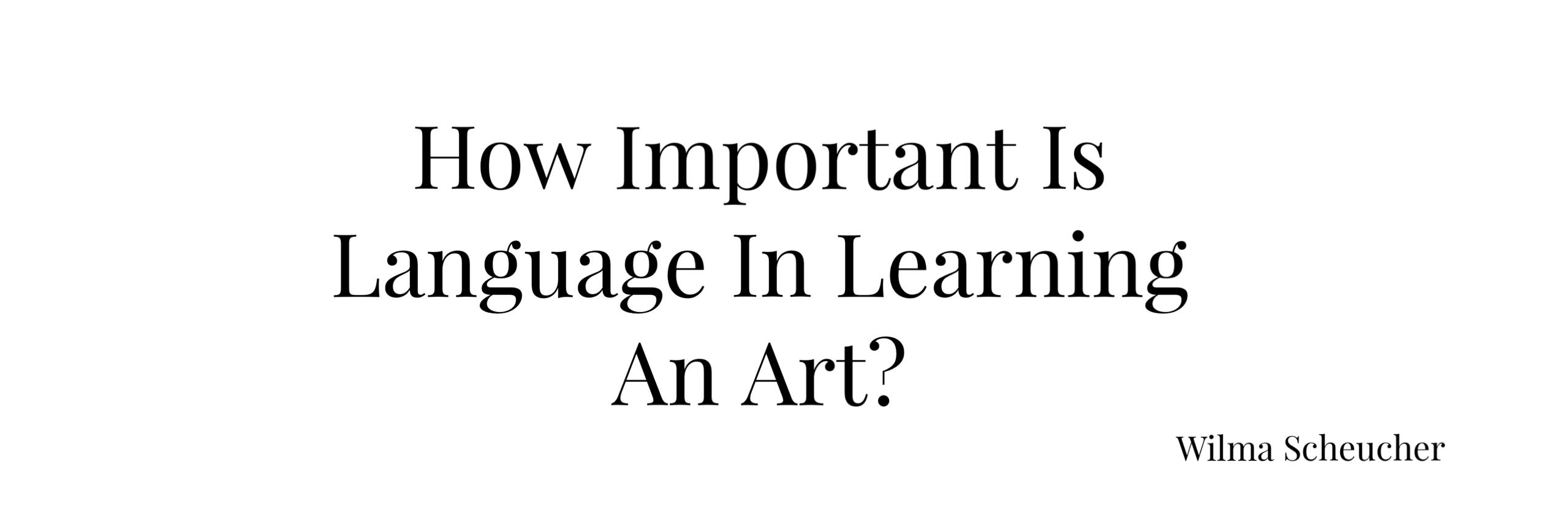
By the time students have mastered the basic techniques, they also have built enough language skills to understand more complicated concepts. For example, when teachers give corrections regarding students arms, legs, heads, hips, verbal feedback will be helpful.
From my point of view as a Karate and Kobudo Instructor, language is helpful in learning an art, but not necessary. Demonstrating a technique or sequences of techniques can be done just as well without verbal communication.
This is created by inner attitude, body language and the individual relationship between teacher and student.
66
Conclusion
So, the good news for Martial Arts students, especially for beginners is: Language is just a tool. There is no need to worry if you do not know the language of your teacher. If you watch carefully you will learn all that you need. Martial art is not for the perfect person. It is for those who want to get stronger, who want to develop and who want to improve.

67
Wilma Scheucher Shotokan Karate and Ryu-Kyu Kobudo Instructor Altmünster - Austria
This Lonely Journey
Dr Gregory T. Lawton
I am in search of a kindred soul, Of whom I am the consequence of, And who understands that to be misunderstood Is the only path to eternity.
In every moment of every day that passes by I dream of a journey that takes me to the end, But if it is only in dreams that we travel We are lonely birds that never leave our nest.
If this separation is the eclipse of our love Let me be the first light to shine again, Let me be the moon that mirrors your love, Let me be the gravity that pulls upon your heart.
If my changing to dust would diffuse light in the world I would set myself on fire and burn away to ash, I would scatter myself on the southern winds
In the hope of becoming a vernal star.
Why have you cast me away on waves of time and space, Why have you sentenced me to drift within this emptiness, Why have you left me alone and forsaken, Why am I lost in my constant longing to understand you?
If we are to be one soul, one substance, Then release me to dissolve into nothingness, And to sleep until I awaken to your love...
For nothingness is preferable to living life without knowing true love.

About the author-
Dr. Gregory T. Lawton is an author of many books, most of them in the area of health science, but also in the genre of Asian martial arts, philosophy, poetry, and prose. Dr. Lawton is a passionate award winning artist and photographer who finds his artistic and creative inspiration in nature, and who frequently attributes the source of his images and writing to the 19th century Persian Prophet, Bahá’u’lláh, the founder of the Baha’i Faith, and the 13th century Persian poet and Sufi Mystic Jalāl ad-Dīn Muḥammad Rūmī. Dr. Lawton has been a member of the Baha’i Faith since 1970 and embraces the Faith’s principles related to the promotion of world unity and peace.

68
Kindly reprinted with permission from: The Silence Between Words 2016, Revised 2019 Dr. Gregory T. Lawton 2040 Raybrook Street, SE Suite 104 Grand Rapids, Michigan 49546 616-285-9999
Lift Hands would like to thank Katherine Loukopoulos Sensei for providing this exclusive book free of charge to our readers. To get your download link please visit and join our group page on FaceBook: Lift Hands: The Internal Arts Magazine







The Lateral Method is the second training method of Long Har Ch’uan.

It is based upon the ‘posture’ known as ‘Cross Hands, Apparent Close Up’ or ‘Ten Character Hands’ — Shízì Shǒu — [see photos on next page], from the end of each segment or third of Taiji Long Boxing. Of course, the principles still belong to the segment of ‘Seize The Sparrow By The Tail.’

‘Cross Hands’ appear in many guises throughout the Taiji Form — more so in the Old Yang Style, which contains several ‘postures’ which have either been totally removed from the modern simplified forms or have been modified for ease, thus making their martial principle redundant!
In addition to ‘Apparent Close-up,’ it appears in ‘Spear Hands With Sit,’ ‘Fair Lady works Shuttles’ and a host of other postures. It is not an 'X' block or anything silly like that... it is a devastating attack to the neck as a break, severe compression or lock. It can also be used to strike and fold the neck leading to excruciating pain and compliance! Of course, the concepts involved are not limited to the neck and can be equally applied to the limbs and joints as well! Think about sleeper holds, face locks and the ideas behind the seizing art of Qin Na and you’ll begin to get the idea.
The name originates from the crossing of the wrists so they appear to form the shape of the Chinese character ten — ⼗
‘Ten Character Hands’ teach the practitioner how to link two or more components so that they move together. It is the understanding of this posture which allows us to smoothly transit from one posture to another.
It is important to observe the weight in the legs during this posture and all postures which are derived from this. The weight is usually uneven, i.e., there is more weight on one leg than the other and never double-weighted, even though it may appear to be so. The body must not sway, nor lean in any direction whilst doing the movements of these postures in the Form or else, it shall move as if being controlled by a ‘wooden collar’!
The martial concept or idea is based on a Cangue — a device that was used for public humiliation, punishment and torture until the early years of the twentieth century in China and other parts of Asia.
72
A man in a cangue (Mù jiā) in Shanghai.
Photography by John Thompson c.1870
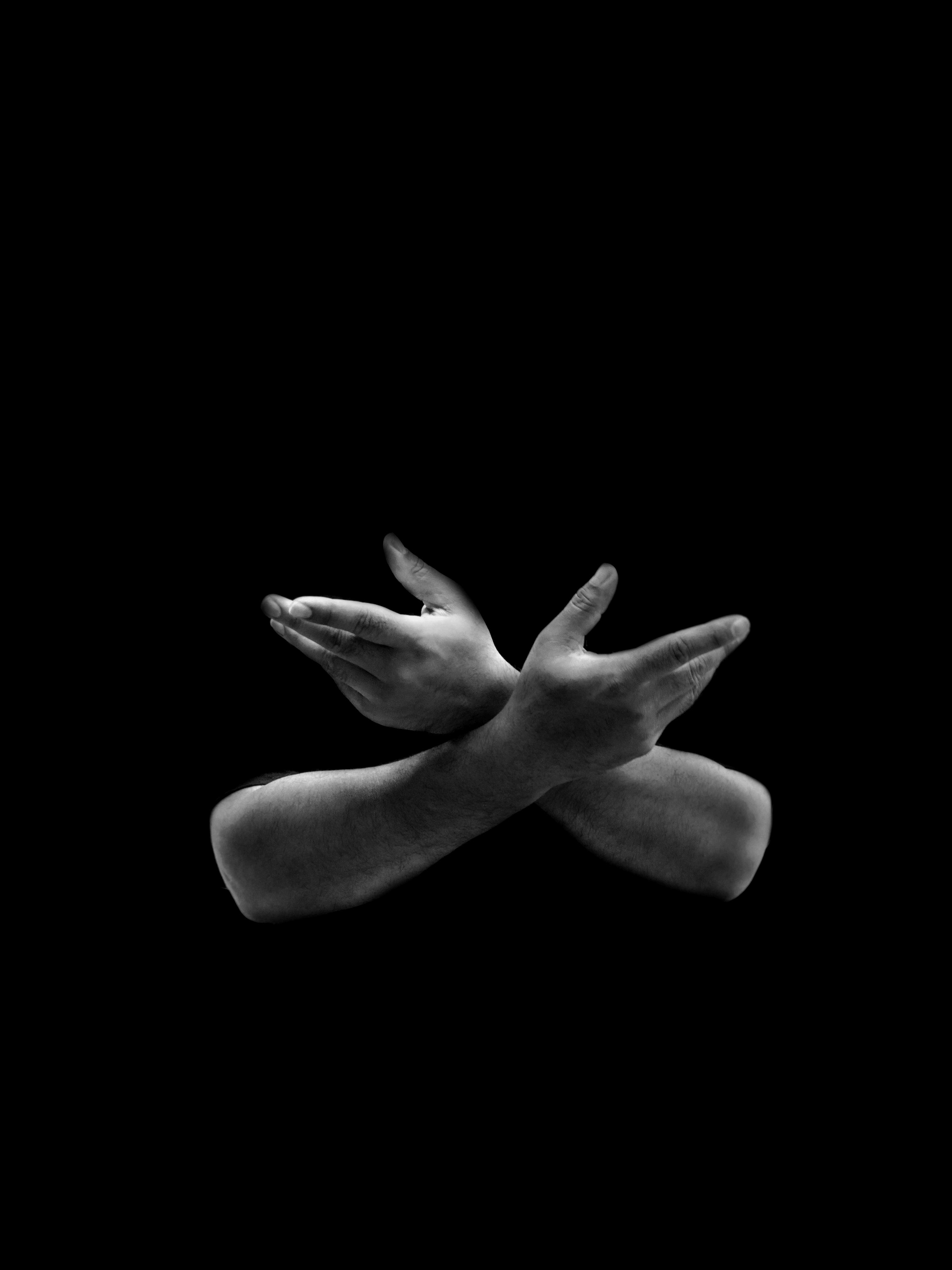

 ‘Cross Hands’ or ‘Ten Character Hands’ from Taiji Long Boxing.
‘Spear Hands With Sit’ — A variant of ‘Cross Hands’/‘Ten Character Hands’ from Old Yang Style
Step Forward With The Big Dipper Hammer (Seven Stars)
— A variant of ‘Cross Hands’/‘Ten Character Hands’ from Old Yang Style
‘Cross Hands’ or ‘Ten Character Hands’ from Taiji Long Boxing.
‘Spear Hands With Sit’ — A variant of ‘Cross Hands’/‘Ten Character Hands’ from Old Yang Style
Step Forward With The Big Dipper Hammer (Seven Stars)
— A variant of ‘Cross Hands’/‘Ten Character Hands’ from Old Yang Style
The Method
The Lateral Method is based upon defence against two punches to the head, striking straight down the centre. Again, it is imperative that the student understand that this is a training method, teaching how to move and strike freely — it is not a technique!




Further, like the Vertical Method, there is an open and closed side. However, here, only the solo open-side method will be shown. The closed-side method is simply the same movements illustrated below with the left leg forward!
The open-side method
The method can be started from either a p’eng/hinge position or from your hands down by your side [Photo 1A] — it doesn’t really matter. The waist leads all the movements. The weight sits slightly backward at the start with the right foot leading. For the sake of simplicity, [else it would require many more photos] only the main state changes of the hands will be shown.
As the waist turns to the left, the weight shifts slightly forward to the right foot and the right hand leads, cutting in a circular motion with the knife-edge of the palm, as the state changes to yang [1B]. The left hand instantly follows the right hand from below, making the same motion, leading with the thumb side of the palm, with both wrists finishing crossed on the centre briefly, [Photo 1C]. The waist continues its movement to the left, with the weight shifting towards the left leg, until the fingertips of the left palm just pass the centreline [Photo 1D], as it just overtakes the right hand from below having changed to a yin state.



The waist now starts to turn to the right, the weight shifts further to the rear, as the right palm rolls facedown in
a hooking arn type motion, changing its state from yang to yin [Photo 1E]. As the right palm takes over the centre, the left palm emerges from below and strikes with the knife-edge, [Photo 1F/G].
74
A B C E D G F
Photo 1: A-G
The two-person method
The two-person method is no different to the solo method, however, we are now working with another energy, so the skills obtained and developed in the solo method must not be altered! Again, it is important that the students don’t turn this into a competition or see this as some kind of technique — it is not! Go back and read the points raised in Part 1 of this article in Volume 25!
The two-person open-side method
You stand with your right foot leading [Photo 2A]. Your partner throws a straight punch with their left hand. Your weight shifts slightly forward as your right hand arcs up and strikes his forearm thus deflecting and changing the line of his attack [Photo 2B], changing state from yin to yang.


As the waist begins to turn to your left and the weight begins to shift towards the left leg, your left hand immediately follows from below and overtakes the right hand as it just passes the centre line, further striking and deflecting his arm, [Photo 2C/D].
Your partner now throws a straight right towards your head, [Photo 2E]. Instantly, your right hand rolls and hooks in an arn type motion to the right, deflecting his attack, and grabbing his wrist, whilst the left hand sneaks from under and strikes his neck at Stomach 9 [ST9], [Photo 2F]. Please note: Do Not Strike [ST9] or any parts of the neck as this is highly dangerous!
This completes the sequence. Your partner now starts to throw their left punch again. Your left palm slides down their right bicep, thus controlling the arm, as well as taking power away from the opposite side and at the same time arriving under their left arm, [Photo 2G/H]. Your right knife-edge again strikes the left arm as the left palm sneaks from under and overtakes as the sequences continues, [Photo 2I].







75
Photo 2: [Left to Right]
A B C D E F H G I
A, B, C, D, E, F, G, H & I
Changing Sides From Open to Closed [Hands]
In order to change hands, as your partner throws their left punch to begin the sequence again [Photo 3A], you simply roll the left palm as it strikes from under the right hand, and repeat the final movement of the sequence [Photo 3B] on this side. You have switched sides. Now your right palm will slide down his left bicep, thus controlling his arm as well as positioning itself under the oncoming right strike, [Photo 3C/D], as the left hand strikes his right forearm with the knife-edge and the right sneaks from under and overtakes striking the forearm, [Photo 2E]. As your partner throws their left punch, the left palm hooks and grabs the left wrist as the right knife-edge strikes [ST9]. You have now completed the sequence on the closed-side with the same foot forward. As in the previous Vertical Method, the sequence is repeated 5 times before you change hands and repeat the sequence on the opposite [closed-side] without changing feet — see Lift Hands Volume 25 for details.






Changing Feet
In order to change your feet, you simply carry out a change step mid-flow without breaking the rhythm of what the hands are doing. A change step is when you simply swap your feet without moving forward or backwards. The sequence in Photo 4A-F, on the next page, illustrates this simple concept, where we change from a left foot to a right foot lead and in the process switch from the closed to the open-side*.
*Right foot, right hand lead.
76
Photo 3: [Left to Right] A, B, C, D, E & F
E F
A B
C D
The entire routine [4 ways] is repeated, until your partner throws a single combination from either side with you defending on the open and closedside alternately and reversing feet without breaking rhythm or fluidity!
The two-person peripheral method
When practicing the standard Lateral Method, as described in the previous pages, the two practitioners are standing on a north/south axis.
There are 2 peripheral methods which emerge from this training, teaching us how to switch to an east/west axis, a south/ north axis, a west/east axis and back to a north/south axis.
The method used will depend on which leg the practitioner has forward, and which hand their opponent is throwing their lead punch with.



It is important that the partner throwing the punches does so continuously and not change anything. The person training the method will initially use the opening movement of the Vertical Method, whilst stepping before continuing with the Lateral Method.






From the end of the sequence [Photo 5A], as your partner begins to throw the left straight again, you parry

77
Photo 5, above, shows the first peripheral method from the open-side from the practitioner’s perspective with their partner leading with the left hand.
E F A B C D
Photo 4: [Left to Right] A, B, C, D, E & F
A
Photo 5: [Left to Right] A, B, C, & D
B C D
the forearm on the inside, using the opening movement of the Vertical Method [Photo 5B] with your left palm, as you step across with your right foot in the opposite direction to the inside of the forearm! Your partner continues with their second punch with the right hand, your right hand strikes the outside of their forearm using the normal lateral method strike, as your left leg swings around, and your left palm knife-edge strike [ST9]. You have now moved 90º onto the east/west axis — your partner adjusts themselves to face you and continues with their next set of strikes [Photo 5C/D]. This is repeated until you have moved 90º on all the cardinal axis.

The second peripheral method is from the closed-side of the practitioner’s perspective [left foot lead] whilst your partner is still leading with their left hand.
As your partner throws their left lead, your parry the inside of the forearm using the opening strike from the vertical Method as in the previous example. This time, however, you step to the left with your left foot [again in the opposite direction to the inside of your partner’s forearm], [Photo 6 A/B]. Your partner continues with their second strike with their right hand as you continue with the normal lateral method — striking the outside of their right forearm with your right palm as the left palm strikes [ST9], whilst your right leg swings behind your left, and the left foot adjusts to bring you back into a reverse bow stance, having moved through 90º in the process [Photo 6 C, D &E].
Once again, a reminder — It is imperative that we don’t regard these methods are techniques!
Self-defence


In Photo 7 [A-G], see next page, we see a ‘technique’ taken directly from within Long Har Ch’uan, where a straight left is dealt with an attack on the arm by the right hand [7A], followed by a strike to the jaw [ST5] with the left palm [7C]. The left palm rolls with the fingers hooking into both eyes [sockets], [7D], as the right palm slides up the arm and grabs the oesophagus using a reverse dim-mak claw [7E]. As the eyes and neck are wrenched back violently, the right knee strikes the base of the skull! [Warning — please do not attempt any of the strikes in the illustration for real on a partner as they are all lethal!].
Again, the concepts of p’eng, lu, ji and arn are being exhibited along with a few others. What we end up with is a variant of Cross-Hands — Step up To Seven Stars [Big Dipper] Hammers. Photo 7G offers an alternative view of the finish.
We can see how the hands and feet have gained the necessary skills through the training method to move fluidly attacking in multiple directions above and below, whilst hold structure and balance.


We will continue with the third training method in Long Har Ch’uan — the Willow Tree Method — in Volume 27, available in September 2023.
My thanks, once again, to Ramakrishna Pillay for being my ‘wooden man’ in the compilation of these images.
78
A B C E D
Photo 6: [Left to Right] A, B, C, D, & E







79
A B C E D F G
Photo 7: [Left to Right] A, B, C, D, E, F & G


August 2023 will see us return with another explosive Camp, this time covering the fundamentals of Long Har Ch'uan and Da Lu, alongside the Taiji Form and qigong!
As with previous camps Camp 2023 will continue with themes and ideas explored in the previous camps, along side regular classes in a progressional manner.
Both, Long Har Ch'uan and Da Lu are a critical component of training in The Old Yang Style and The Erle Montaigue System.
Long Har Ch'uan is oft misunderstood method and trained incorrectly. Long Har Ch’uan is a training method! Long Har Ch’uan is not a technique or a series of techniques, nor should it be taught as a technique!
Long Har Ch’uan is not a self-defence or fighting method [although concepts will emerge from within it]!
Long Har Ch’uan must not be changed — The method changes you, you don’t change it! It is an important training method and must remain a training method!
Long Har Ch’uan teaches us the Principles of Taiji.
Long Har Ch’uan teaches us the correct body mechanics for both combat and healing upon a reflexive [innate] level.
Long Har Ch’uan trains the mind in developing a ‘no mind state’ — the mind of a child — returning us back to our innate nature!
Long Har Ch’uan personifies the principle — the centre moves the peripherals.
This is a rare opportunity to learn this training method and its concepts correctly! Erle, himself, lamented:
"I have people who have been studying with me for a long time and they still haven’t grasped the correct way to do Long Har Ch’uan!"
Da-Lu - Sometimes known as the 'Great Repulse' or 'The Large Rollback,' is a secondary component of Da Shou, commonly referred to as Push Hands, dealing with the four corners. It is another critical training method which helps develop the basis of natural movement in self-defence.

Cost: £260
Training Times:
Friday 3pm - 7.00pm
Saturday 9.30am - 6.00pm
Sunday 9.30am - 5.30pm
Lunch 12pm - 1.30pm
Venue:
Fa-jing Ch’uan Internal Chinese Boxing Schools
Top Floor Unit 36 Faircharm Trading Estate
Evelyn Drive
Leicester LE3 2BU
Early bird discount £230 extended for those who book their place by July 27, 2023.
All deposits are non-refundable.
Payments can be made via PayPal:
paypal.me/NasserButt
Leicester is served by many airports nearby:
Luton 74 miles; 120 km; 1 1/2 hours by car and less than 1 hour by train.
Birmingham 43 miles; 69 km; 1 hour by car and less than 1 hour by train.
For those needing accommodation - there are many hotels and B&Bs both near the venue and on the outskirts of the city for those wanting a quieter and more serene surrounding.
For information on these or any other matters, please contact Nasser Butt.
explosivefist@gmail.com
82
The Web of Chi and the Human Body

The last edition of Lift Hands magazine contained the first article in a planned series on the practice of Asian medicine entitled, “The Poetry of Chi, The Mystery and Majesty of Energy in the Human Body”. In this article entitled, “The Web of Chi and the Human Body,” we will delve deeper into the fascinating theories, concepts, treatment techniques and protocols of traditional and contemporary Asian medicine.
In the last article we visited the history of Asian medicine and its central tenets, especially those related to the identification of energy disruptions and pathologies. In that article we laid some of the initial groundwork for understanding the occurrence of various diseases in the human body.
In this article, “The Web of Chi and the Human Body," we are going to compare traditional Asian medical theories with our contemporary medical understanding of illness and disease. Furthermore, we will look at methods of treatment, what we will refer to as “therapeutic modalities” and their energetic and physiological effects on the human body.
This article constitutes a collaboration between The Blue Heron Academy of Healing Arts and Sciences and Lift Hands magazine and as such it is Lesson Number Two or Part Two of an ongoing training program in Asian medicine for martial artists leading, for those students who complete this course, to certification in acupressure and tuina therapy through our state approved AcuMyoTherapy training program. The Blue Heron Academy is a state licensed post-secondary school licensed in the state of Michigan to teach acupuncture, AcuMyoTherapy, and several other health career programs. The Blue Heron Academy has been offering educational training programs for over forty years.
The Blue Heron Academy has pioneered a unique approach to training and educating our students and clinicians called “Patient Centered Education”. Patient Centered Education is training that focuses on clinical practice, patient case studies, and the acquisition of knowledge and skills through the hands-on treatment of patients. Rather than focusing on the esoteric metaphysical aspects of Asian medicine we teach from the case histories of patients we have treated through decades of clinical practice.
What follows is the Academy mission statement:
A Singular Approach to Education, Building a Healing Community
The roots of our Academy run deep within our community and are reflective of our commitment to service. Our educational approach is innovative and began with several community service projects for women in transition, victims of trauma, individuals without access to healthcare or the treatment of serious medical conditions such as HIV/AIDS as well as treating patients from the local mission district and the homeless community. It was from this platform of service that the Academy began, grew, and thrived.
Service as a means of building a healing community is at the heart of our vision, mission, and activities. We firmly adhere to the Baháʼí concept of “Let deeds, not words, be your adorning…” and as such we are keenly focused on service through action, and not words alone. We have adopted a broad and all-encompassing vision that champions the principles of the oneness of humanity, unity in diversity, and spiritual equality.
83
We recognize and celebrate the nobility of humankind as spiritual beings, and the importance of consultation and collaboration for the betterment of both the individual and the community. These are key tenets for our diverse family of teachers, staff, and students, people who have united in a common mission of service with each other and with their communities in the hope of building a healing community.
At the end of this article, you will find a link to a self-study and quiz page that will allow you to complete the curriculum requirements for completion of Lesson Two. If you did not complete Lesson One, please refer to Lift Hands magazine Volume 25, March 2023, The Poetry of Chi, The Mystery and Majesty of Energy in the Human Body, read the article, and follow the provided link to Lesson One.
Homeostasis and Yin and Yang
Traditional medicine practices such as those incorporated in the practice of acupressure and tuina can be defined as ancient and historic healing systems. These early traditional health practices primarily employed natural methods of health care since the pharmacology and technology of conventional medicine were not known during the time of their discovery and development. These healing systems were formulated over centuries and were the repositories of accumulative empirical experience and evidence. To understand these traditional systems of health care, it is necessary to consider the cultures in which they were created. In general, these cultures recognized the holistic nature of humanity and the wisdom of living in harmony with the environment.
Both western and eastern health care systems share a common understanding of the importance of balance and harmony in the interactive functions and systems within the human body. In the West this concept was called homeostasis, and, in the East, it was enveloped in the Tao and defined in terms of yin and yang. Homeostasis is known as the self-regulating processes by which our body manages to maintain internal equilibrium while adjusting to external conditions such as temperature. If this self-regulating mechanism is successful, life continues in a normal state, our internal temperature is regulated and our various metabolic processes function as they should. If our body is unsuccessful in self-regulating, we become sick or

we die.
Our normal metabolic equilibrium falls within very narrow parameters. While there is variability in range and degree, that variability is very narrow and when it is out balance, we begin to observe the symptoms of disease. Every culture and system of health care in the world has observed and quantified these symptoms based on their severity. Take for example, body temperature. If the body deviates too high or too low from the standard of 98.6ºF or 37ºC then we are either exhibiting a fever (hyperthermia) or hypothermia. Homeostasis or the dynamic equilibrium falls in a very narrow range. Balance is health and imbalance is disease. Too low of a body temperature is a yin condition and too high of a body temperature is a yang condition.
84
Students in our manual therapy classes are learning and working on technique.
Building upon the concept of homeostasis, I developed a treatment concept in 1980 that I called homeosomatic. The homeosomatic theory of treatment is based on the hypothesis that the cells, tissues, and systems of the human body respond best to therapies that work in concert with the natural processes and functions of the human body. That is, the body best responds to treatments that are most like the body’s own natural healing and defensive processes. The therapist using this concept recognizes that all forms of therapy cause some form of stress to the cells, tissues, and human body systems and works to reduce that stress to its lowest level of interference. In the words of Hippocrates, “first do no harm”. Therefore, the homeosomatic approach to treatment and therapy includes only those modalities that are the least invasive and that work within the healing parameters of the human body, and do not overtax or stress our innate healing mechanisms beyond what is needed to stimulate the repair, growth, and innate healing processes.
The Yin and Yang Energy of Healing
Often, when I start teaching a new group of student’s acupuncture, I begin by asking a question, “From a physiological perspective how does the human body “know” the difference between an acupuncture needle inserted for therapeutic purposes and the penetration of a sliver of some kind of material, perhaps, wood, glass, or metal, from a sterile and disposable acupuncture needle? The answer is that the body does not “know” or perceive that there is any difference between an acupuncture needle and an accidental sliver penetration through the skin. The physiological reaction to each is known in medicine as an inflammatory/anti-inflammatory response. The classical definition from the Latin language of an inflammatory response is dolor, rubor, calor, and tumor or pain, redness, heat, and swelling and to this we now commonly add muscle weakness or loss of function.
From this basic concept, that the body, from a physiological and biochemical perspective responds to an “injury," whether from the intentional insertion of an acupuncture needle or the accidental penetration of a sliver, in the same manner we quickly begin to get an understanding of at least one method or pathway by which acupuncture has a physiological and biochemical effect on the human body. Although there are many physiological and biochemical pathways by which acupuncture as an agent of injury to the body cells and tissues works, one of the simplest pathways is through what has been labeled the “counter-irritation theory of medicine”.
To understand this theory of medicine, counter-irritation, we first need to understand the biochemical changes that occur to the cells and tissues of the human body because of injury. Understanding personal injury and the healing process is an important concept for all martial artists because at some point in our training as martial artists we will all face some degree of athletic injury.
Understanding the inflammatory process
When we experience an injury, especially to the protective barrier provided by the skin, the inflammatory process goes into action as an immediate, first line of defense, and nonspecific mechanism that helps protect the body against infection and injury. The purpose of inflammation is to respond to cellular and tissue damage and to restore balance or homeostasis. Infectious agents that invade the body by breaching the skin barrier are often present as viruses and bacteria. These organisms are some of the most common triggers of the inflammatory process. Other triggers to the inflammatory process may include physical trauma, chemical toxins, and heat. Viruses cause inflammation by entering and destroying certain cells of the body and bacteria release chemicals called endotoxins that can initiate inflammation. The objective of the inflammatory process is to eliminate the cause of cellular and tissue injury, to clean out necrotic or dead cells, and to start cell and tissue repair processes. An injury or infection initiates a series of physiological and biochemical reactions that include:
1. Increased blood flow to the area of injury called hyperaemia.
2. Increased white blood cell and immune activity.
3. Increased nerve sensitivity and pain.
4. Increased fluid to the area of injury and swelling.
5. Increased metabolic and catabolic activity in the injured cells and tissues.
85
Above: The Human Body has an extraordinary capacity for self-healing.
As therapists we learn to harness that power.
Below: Po Sum On is a warming, blood moving, liniment. It increases blood circulation and fluid exchange in damaged tissues, and this is an important factor in healing. Po Sum On is used to treat joint and muscle aches, certain forms of arthritis, neuralgia, and traumatic injuries including muscle and tendon strains, and joint complex and ligament trauma or sprains. It may also be used as a skin lubricating substance with gua sha scraping chafing techniques.

Harnessing the Inflammatory Process for Healing

If we examine the various manual therapy healing arts, we find that the counter-irritation theory is harnessed by many types of manual therapists including tuina practitioners. Contrary to popular opinion, healers do not “heal” tissues with chi emanating from their fingertips. Instead, the healing process most often involves micro-trauma to tissue through some kind of treatment technique or modality. Tuina, gua sha, pressure point therapy and acupuncture are all manual procedures that cause microtrauma to connective tissue. This micro trauma causes an inflammatory reaction in the tissue, and the subsequent “healing cascade” of events outlined in the box entitled, “The Body’s Self-Healing Capacity”. This micro trauma leads to vascular responses, adaptation of the nervous system, and an anti-inflammatory response on the part of the hormonal and immune systems.

Of the several treatment modalities in Asian medicine that utilize the counter-irritation theory of healing none are so dramatic in effect as gua sha or scraping and chafing along the major acupressure meridians or the tendino musculo pathways of the body. The tendino musculo pathways are of special interest to the acupressure or tuina practitioner and are often employed in the treatment of athletic, martial art, and common musculoskeletal injuries.
Gua sha treatments may employ either western or eastern topical substances as lubricating substances on the skin or medicated oils or liniments. My favorite is Po Sum On. With the skin mildly lubricated with Po Sum On, manual friction is applied to an area or along a meridian or tendino musculo pathway.
The manual friction may be applied with either some form of gua sha tool or a sterile tongue depressor. If the practitioner uses a reusable gua sha tool it must be a tool that can be sterilized after each use.
Many traditional Asian medicine (TAM) practitioners do not practice proper hygiene and cross infection procedures and reuse gua sha tools without proper sterilization between each treatment application on a patient. I have had some TAM practitioners and acupuncturists suggest that the patient’s “chi” will protect
86
Students in our herbal medicine classes making their own medicated oils, liniments, and gua sha lubricants
them from viral, bacterial, or fungal infection from contaminated instruments. As the recent COVID pandemic has graphically illustrated, this is not the case.
A tuina practitioner may also employ direct topical treatments and stimulation along the classic pain pattern pathways as charted by Dr. Janet Travell. Dr. Travel is credited for the development of contemporary trigger point therapy. The trigger point locations and charts are probably more accurate representations of pain referral patterns than the classical tendino musculo “meridian charts”. To the well-trained and historically knowledgeable acupuncture, tuina, or acupressure practitioner the theories underlying Travell’s trigger point therapy are “borrowed” from the well-established and much older methods employed in Asian medicine, acupuncture, and tuina centuries before Dr. Travell’s “discovery” of trigger points.

In Chinese medicine these soreness or pain point locations are called ahsi points. A closer translation of ahsi to English may be “that’s the point” meaning that upon palpation the practitioner has located the exact point of the patient’s pain or discomfort.
Ashi points were first cited in the 7th Century by Sun Simiao (a Chinese physician who was known as China's King of Medicine) who specifically described methods of palpation, diagnosis, and treatment of tender or ashi points. Ashi points were recorded by Sun Simiao in the Tang Dynasty text Thousand Ducat Prescriptions. Dr. Travell did not discover this concept, it existed in eastern medicine hundreds of years before Travell appropriated the concept and renamed the points and pain dispersal patterns. In the 7th Century Sun Simiao specifically described methods of palpation, diagnosis, and treatment of tender or ashi points. The locations of these regions of pain radiation correspond to the tendino muscular “meridians” of acupuncture and acupressure.
87
Description of gua sha procedure from the authors book, Chinese Massage and Acupressure, A Practical Approach, pages 41 and 42.
The counter-irritation methods that are used to treat acupressure and ashi points and along the main meridian and tendino musculo pathways are a powerful tool that uses the body’s innate healing processes as previously described in this article, to generate a healing response in the cells and tissues via the inflammatory/antiinflammatory response system.

88
Sun Simiao as depicted by Gan Bozong, woodcut print, Tang dynasty (618-907)
Defensive Chi
Martial artists, and perhaps more specifically internal martial artists who train in dao yin, chi kung, abdominal breath work, iron shirt chi kung, bone marrow cleansing, and other related internal disciplines may know far more about the nature of chi and its manipulation than many traditional Asian medicine practitioners who do not participate in any of these internal practices. This at least has been my personal observation. I have often become acquainted with various healers who lack physical conditioning and who have not mastered basic aspects of the breathing practices common to the internal martial arts. How can someone who is in poor physical condition, who does not train in internal energy disciplines, and who has very little control over basic human functions such as breathing claim to possess the ability to control, direct, and project chi?
A general definition of chi is that chi is energy, but since energy can come in many forms, what kind of energy is chi? A common definition of chi is that chi is a form of vital energy, breath, and blood. In some circles chi is thought to comprise the electrical potentials that we see in human cells or the forms of electrical energy that moves along and among the nerve pathways of the human body. I think that these are all good definitions of chi but that they fall short of fully defining it.

89
"Qian Jin Yao Fang," also known as "preparation for urgent Qian Jin Yao Fang" and "Qian Jin Fang," is one of the classical works of traditional Chinese medicine in ancient China. It comprises a total of 30 volumes and is a comprehensive clinical encyclopedia, which is known as the earliest clinical encyclopedia in China. It was written by Sun Simiao in the Tang Dynasty.
For those that work in the healing arts, and specifically, the hands-on healing arts such as tuina and acupressure, a common observation is that close proximity or direct physical contact with certain individuals results in a feeling of wellbeing. Another common observation is that some individuals seem to exude a stronger sense of this feeling of wellbeing than others. It is as if some individuals possess more chi or some electromagnetic force that radiates from them.
Having observed and experienced this many times I have come to accept that certain people radiate a strong magnetic force that most likely emanates from what has been referred to in the West as a “strong constitution”. In 2017 Forbes magazine published an article that sought to answer the question, “Is it possible for the human body to create an electromagnetic field?” The short answer is yes, but not only can the human body emit an electromagnetic field, but according to the known laws of physics it must do that because it is composed of atoms and atoms are held together, move, and interact with each other based on their electromagnetic energy fields. The question is not whether the body has an electromagnetic energy field, but rather it is why we don’t generally accept the fact that we are electromagnetic beings. Is this electromagnetic energy field chi? The answer to this question depends upon how you define chi.
Defensive chi or Wei chi may be defined as chi which is protective by nature and that provides resistance to injury, infection, and disease. There are several ways or methods of cultivating defense chi including proper nutrition or the development of nutritive chi, as well as through physical training practices and breathwork. Internal martial artists cultivate defensive chi through practices such as, dao yin, chi kung, abdominal breath work, iron shirt chi kung, bone marrow cleansing, and other related internal disciplines.
As a result of these specialized methods and internal training practices students, practitioners, and masters of these techniques and methods can demonstrate resistance to physical trauma, bruising and hematoma, and the ability to absorb physical blows with a reduction in tissue damage and trauma. These abilities are the result of the cultivation of defensive chi. We can build defensive chi in our bodies and in our patients by utilizing the practices cited above, avoiding certain stressors such as cigarettes, alcohol, and drugs, following a balanced training regimen, getting proper rest and relaxation, and following good dietary and nutritional practices. There are also tuina and acupressure techniques, like qua sha, that build our reserves of defensive chi or that redirect defensive chi to the surface connective tissues of the body.

90
Gua Sha pathways down the posterior aspect of the back along the erector spinae and gluteal muscle regions with highlights for a couple of common myofascial trigger point areas
Investigating Gua Sha as a Therapeutic Modality
Gua sha, also known as scraping or chafing, is a traditional Asian healing technique that uses a gua sha tool to create friction, pressure, and compression to irritate the surface layers of the skin. A traditional gua sha tool is a smoothed edged instrument that may be made from bone, jade, plastic, metal, or other materials. The friction pressure that is caused by a gua sha tool causes reddening or hyperaemia at the skin’s surface and in certain cases, that employ deeper pressure and friction, small, red, rash-like skin lesions called petechiae.
Gua sha is thought to date back to the Ming Dynasty where jade stone was used to scrape the skin at various locations to treat many different diseases. Today, its most common use is for the treatment of musculoskeletal disorders. The primary physiological effects of gua sha are to initiate the inflammatory and anti-inflammatory response, to increase blood flow to an area or region of the body, and to stimulate nerve receptors called mechanoreceptors. Gua sha is often used to treat and reduce pain.
Traditional Asian medicine practitioners believe that gua sha releases unhealthy toxins from the body and decreases blood stasis within painful muscle tissues. Gua sha may be used to stimulate new oxygenated blood flow to an area being treated and to promote cell repair, regeneration, healing, and recovery.
As was previously mentioned in this article, a lubricant is normally used when performing the gua sha technique. This lubricant can be a massage oil. When gua sha is performed with a lubricant a small amount is used so that the area being treated is not too slippery and still allows for the application of pressure and friction that will result in minor damage and irritation to the area being treated. Another way to think of gua sha is the application of deep friction using a tool.


In our Asian medicine programs, we teach the use of sterile tongue depressors as gua sha tools and we use a mild and moderate technique that avoids the dramatic skin damage and petechiae commonly promoted by many Asian practitioners of this technique. The use of hospital standards of sterilization and personal protective equipment is important to prevent contamination of infectious pathogens.
When a gua sha tool is used it will compromise the infectious protective barrier of the skin and increase the risk of the leakage of occult blood and fluids from the skin. The risk of infection and cross infection necessitates the need for infection control procedures and the sterilization of gua sha tools. Some traditional gua sha tools, such as those made from bone, wood, or horn cannot be sterilized and these tools should not be used for gua sha therapy.
Left: The author’s training manual on tuina and acupressure first edition, 2004.
Conclusion
This has been Lesson Two in an ongoing series of articles on contemporary approaches to traditional Asian medicine as utilized in acupressure, tuina, and gua sha therapy. In this article I attempted to present information regarding some of the mechanisms by which acupressure, tuina, and gua sha therapy exercise a therapeutic effect on the physiology of the human body and its healing from inflammatory musculoskeletal conditions and pain. These ancient treatment modalities have been used by millions of people and they will continue to provide a valuable contribution to humanity and health care in general. It is without doubt and full confidence born by over 50 years of clinical practice using these treatment modalities that I suggest that these natural methods of health care provide more relief for human suffering and pain than many conventional therapies that involve the use of synthetic medication or surgical procedures for many musculoskeletal conditions, disorders, and diseases.
To complete the training requirements for Lesson Two and to receive your Certificate of Completion please follow the link below, register for Lesson Two, and follow the instructions provided in the lesson.
Link to Lesson Two:
https://www.flexiquiz.com/SC/N/dbdff8db-ddcf-4a12-8f83-fdc0fd9a9e90
About the Author and Course Instructor:
Gregory T. Lawton D.N., D.C., D.Ac., has spent sixty years studying the healing arts and martial arts, including the internal Chinese martial arts of dao yin, chi kung, Tai chi chuan, Hsing Yi Chuan, and Pakua Chang. Dr. Lawton is a licensed naprapath in Illinois, a licensed chiropractor in Michigan, a certified naturopath in Kentucky, and a certified acupuncturist in Idaho. Dr. Lawton is nationally board certified in acupuncture, chiropractic, physical therapy, and radiology. He is the founding board member of the American Manual Medicine Association, the author of dozens of published articles, and has written over one hundred books and training manuals related to health care and martial arts.
Dr. Lawton is also a certified fellow and diplomat of the International Medical Acupuncture Academy. Dr. Lawton is a graduate of the National University of Health Sciences and completed a postgraduate course in TCM based acupuncture at the National University of Health Sciences and the New York Chiropractic College. Dr. Lawton has been teaching Asian martial and healing arts for fifty years. He founded the Blue Heron Academy of Healing Arts and Sciences in 1980. The Academy offers the only state approved training programs in acupuncture and Asian medicine in Michigan.

92

How to order your copy:
Click on the link provided, or copy and paste into your browser.
https:// www.peecho.com/ print/en/677092
The website takes you directly to the page to order the book.
1. Which size do you like? Select the size. Next…
2. Would you like color? Select the color. Next…

3. How many copies would you like? Discount and Pricing. Next…
(There is a discount pending on the number of copies.)


4. Where can we ship your order? Next…


April 2023 saw the return of the Erle Montaigue System and Old Yang Taijiquan to the Italian shores after an almost 5 year absence!

The venue was the beautiful city of Bari, sitting on the Adriatic coastline in Southern Italy, and hosted by the even more beautiful Monica Mitoli. Let me say this from the start… If you are ever in Bari, or live there and are wishing to learn Taijiquan — look up Monica who holds her classes at Edian Danza A.S.D located on Via Marcello Celentano in the centre of Bari. You'll be in good hands! Monica is not only one of my oldest students, who lived and trained in Leicester with myself for several years — she is also one of my dearest and closest friends.
I had been meaning to return to Italy on a regular basis, unfortunately however, Covid-19 got in the way along with Brexit and everything got thrown up into the air. Having said that, it was worth the wait!

So, let’s get the touristy stuff out of the way first.
Bari is the capital city of the Metropolitan City of Bari and of the Apulia [Puglia] region, on the Adriatic Sea, southern Italy. It is considered the second most important economic centre of mainland Southern Italy after Naples. It is a port and university city, as well as the city of Saint Nicholas.
Bari is made up of four different urban sections. To the North is the closely built old town on the peninsula between two modern harbours, with the Basilica of Saint Nicholas, the Cathedral of San Sabino (1035–1171) and the Hohenstaufen Castle built for Frederick II, which is now also a major nightlife district. To the South is the Murat quarter (erected by Joachim Murat), the modern heart of the city, which is laid out on a rectangular grid-plan with a promenade on the sea and the major shopping district (the via Sparano and via Argiro).
Bari, known in antiquity as Barium, was a harbour of the Iapygian Peuceti. According to preserved etymology by authors of antiquity — the Etymologicum Magnum — Barium, is explained as the word "house" Messapic — an extinct Indo-European Paleo-Balkanic language of the southeastern Italian Peninsula, once spoken in Apulia by the Iapygian peoples of the region: the Calabri and Salentini (known collectively as the Messapii), the Peucetians and the Daunians. Messapic was the pre-Roman, non-Italic language of Apulia. The city had strong Greek influences before the Roman era. In ancient Greek, it was known as Βάριον. In the Third century BC, it became part of the Roman Republic and was subsequently Romanized. The city developed strategic significance as the point of junction between the coast road and the Via Traiana and as a port for eastward trade; a branch road to Tarentum led from Barium. Its harbour, mentioned as early as 181 BC, was probably the principal one of the districts in ancient times, as it is at present, and was the centre of a fishery.
96
locals — Bari should definitely be on your list of destinations. It has its own local airport, a 20 minute train ride which brings you right into the heart of the city. So, what did we do here?


The subject for the workshop was entitled as, ‘Old Yang Style: The Fundamentals of Combat and
Healing’.
The ‘fundamentals’ of any art are the key components! When folk admire someone doing a so-called ‘advanced’ form, what they don’t realise is that they are simply doing the basics well! There are no advanced forms per se.
Further, the basics cannot be understood without progression. There is an order to learning things and you cannot miss out steps if you want true understanding of your subject. I have been arguing this for well over a decade now. Sadly, during this period, I myself, and others, have witnessed snake oil salesmen peddling their snake oil to the unsuspecting public — especially in the Old Yang Style and The Erle Montaigue System. After having sold novices ‘advanced forms’ and ‘small frame’ mixed up with a whole heap of poorly understood [if understood at all] principles for years, these salesmen are now selling the ‘basics’ to the very same people!
But, let us not dwell on negativity. To them, their path!
It is always a breath of fresh air when you are blessed with students and friends who wish to progress and focus on the fundamentals. In Bari we had such a group of people.
We began the workshop with qigong in beautiful sunshine, with the green and blue hues of the Adriatic Sea as a backdrop, working on a simple notion — learn how to ‘stand like a balance’. Before we even raise our hands, we first must learn how to stand and hold a soong state. If you cannot or don’t know how to stand correctly, then going any further is simply a waste of time!
Structure is the key for both combat and healing, without it you have nothing and it begins with learning how to stand.

97
After practicing standing, we went on to the full Three Circles qigong. Again, the aim was simple, to apply and hold the same feeling which we had developed in standing.




The rest of the afternoon was spent playing games — learning like children in play. Learning how to listen with our own body, both internally and externally. We ended the first day with form and applications. It is imperative that, regardless of whether you practice your Taiji as a health art or a martial art, you are shown the applications. It is the applications which give meaning to the abstract movements of the form.
With the day done, it was time to explore the city and grab some food. As the evening drew in, both the old and the new quarters started to team with life, music and the aroma of good food!

Ground in Fighting (Commonly Called Standing Like A Post)’
When standing centered, your feet should be rooted. Start by understanding the four primary techniques, then advancing and retreating.

The four techniques are ward-off, rollback, press, and push. You have to do a lot of work to get them to be real. For the body posture, your waist and headtop should both be correct. When sticking, adhering, connecting, and following, your intention and energy are to be uniform throughout. Movement and awareness respond to each other. Mind is sovereign and body is subject. When you get the degree just right, you will naturally have both the civil quality and the martial.

After practicing The Post, we moved onto another set of training methods from Taijiquan and The Erle Montaigue System — P’eng Training. Once you have developed the fundamentals of The Post, its natural progression is P’eng Training. This not only helps us develop our P’eng, but also tests our post.


According to Erle, himself, as a part of his training regime:
Being one of the more important aspects, we train in P’eng… You partner holds his arms stiff against your P'eng arm. You should only move about 3 or 4 inches using only the forward movement of your rear leg. Your feet are greatly concave. Your partner should be pushed upward with the front foot moving up and then you have to also control his weight back down as you sit back again.
P'eng is a posture from the Taiji form and it is said that if a person only learns one technique in his or her life, then it should be P'eng. Meaning "To Ward of Slantingly Upwards,” the arm is held in a sort of rounded position as if holding a tree or hugging someone. This gives the greatest power for damaging blocks when attacked.1
100
After breaking for lunch at our regular diner not far from the dance studio, we returned to continue our work on the fundamentals of the system. The focus now was on the internal, developing soong, understanding centring through associated training methods from Taijiquan and the 8 Walking Qigongs of Baguazhang.

Stand there. Feel the soles of your feet (barefoot).
Squeeze the whole body downward slightly bending at the knees, the arms hang super loosely at your sides. Feel the neck and base of skull; there should be 'a feeling'. The buttock should tuck under automatically. You should be able to feel the weight distribution at the base of your feet. Stay there for a moment. Then change the weight to the right foot, [split the mind as the weight shifts, feeling the weight differential in both feet simultaneously], keeping those feelings intact by complete relaxation. Keeping that state, slowly lift your left foot and step backwards so that the toe touches the ground lightly behind you. Your arms should begin to rise up in front of you, right in front into an on-guard position and come into play as your weight goes on to the left foot. Still holding that state. Bring the right foot back to the left, weight on to it, turn your left toes in so that you are now back to your beginning posture. Reverse so that you now step forward with your left foot. Then reverse the whole thing.2
The 'eight walks' come from Baguazhang and involve walking very slowly brushing your ankles (a-La Bagua) together while performing totally unrelated hand and arm movements. This is to get your arms and feet moving independently.3
101
****



 Monica Mitoli — Chief Instructor Bari
Monica Mitoli — Chief Instructor Bari
In the late afternoon, we continued with our Old Yang form practice and developing skill sets by isolating postures and learning basic applications. We ended the day with a qigong for the kidneys.



104

After a brief interlude for lunch, we returned for the final session of the camp, practicing the Old Yang Style with applications, including some of the healing applications of the postures and how these skills can be used in basic acupressure and tui na.


To end the training session, we went through the basic Small San-sau — the entry point test for the Erle Montaigue System.

106








107

hand.
Bari is in the good hands of Monica and I really do want to thank her for not only putting the camp together, and hosting myself — but, also for making sure that everyone had a good time both training and when we were out and about exploring the city.
To all the students who attended, from Italy and beyond, thank you very much for the support and it really was fun and pleasure to train with you all.
To all Monica’s students — thank you for your warm-hearted welcome, your kindness and love, and thank you for the gifts you gave me. You are all unique and talented. Stick with your Taiji and Monica… you won’t go wrong. You are all beautiful souls and in you all I have found another beautiful family…
Luisa Maria and Palmira… you are both so full of grace!
Mariapaola… you are the most craziest ball of beautiful energy I’ve met — don’t ever change! If I ever need a lawyer, I’ll know who to hire to run rings around the judge!
Anna… you are seriously talented — I don’t even think you realise how much.
And Monica… I love you!
Of course, we ended the session with tomfoolery and all the single ladies, apparently if you go around the statue of Saint Nick, three times anti-clockwise — you’ll meet the man of your dreams!
Over the next few pages are a few fun images from training and out and about in Bari.

Ciao Bari… until we meet again!
Notes
Bari profile — Source; Wikipedia
1, 2, 3 — 35 Weeks in the Erle Montaigue System
109

110
The beautiful ladies from Bari Taiji [Left to Right] Luisa Maria, Monica, Mariapaola, Anna & Palmira







111







113
Images on this page courtesy Faith Crompton














Ammanford�Scouts�Hall� Monday�7.30�-�9.15pm� Wednesday�7.00�-�9.00pm� Sunday�Full�Day�(Monthly) Peter�Jones� Chief�Instructor� Taiji�Pa-Kua� Internal�Fighting�Arts taijipakua@gmail.com
The Oldest Established School of The Erle Montaigue System In The UK




Gaku Shi Juku Kendo Kai www.leicesterkendo.com
Who is in Your Kwoon (Dojo)?
Understanding the kinds of students who are attracted to martial arts and martial arts training can assist the martial arts instructor in knowing how to best train and retain students. Not all martial art students are the same and not all martial art students have the same abilities, needs, or motivation for pursuing martial art training. Forcing a student into training that they have no interest in, simply because it is how you were taught or what you were taught as a student, will result in your losing students faster than you can enrol them.
Regardless of the kind of martial art school you run or the style of martial art you teach your students will have different personalities, physical and athletic abilities, as well as motivations and goals for enrolling in your training programs. If your curriculum is static and only designed for students who want to learn a specific style of martial art your student attrition rate will be high. Obviously, you lose the opportunity to train a student who loses interest in your school and training and drops out.
If you do not know “who” is in your dojo and what their motivations are for coming to you and your school, you will not be able to effectively communicate with the different kinds of students who seek training from you. Not knowing who your students are and their motivation for training is often a major flaw in the training method of many martial art instructors and a major reason as to why they fail to retain new students.
Through observation over many years of teaching martial arts I have identified several personality profiles and traits common among the various students I have taught, and I have identified common motivations for pursuing martial art training. As a result of these observations, I have categorized my students and their motivations for seeking training in the martial arts into several categories which I will describe below:
Category One – The Spiritualist
The spiritualist may be religious and belong to a religious community or they may consider themselves “spiritual” and not be aligned with any major religion or group. An example of a spiritual approach to the martial arts might be a Christian or Muslim who aligns themselves with the tenets and practices of their faith and uses the martial arts as a way of practicing moral principles and a path towards self-improvement. The spiritualist may also be a person who believes in new age, esoteric, shamanistic, and/or metaphysical practices and is attracted to the metaphysical elements and beliefs of the internal martial arts.
Category Two – The Philosopher

The philosopher may be a spiritual person, or they may be an agnostic or atheist who is attracted to the martial arts for their moral, ethical, and higher intellectual principles. The philosopher is often a “historian” who studies the history and literature of martial arts. They are frequently interested in reading books on the lives and teachings of important figures in the martial arts.
Category Three – The Health Enthusiast
The health enthusiast, like anyone who engages in athletic activity, is interested in the many physical and psychological benefits of exercise. In addition to physical conditioning, the alleviation of stress and many other body/mind benefits the martial arts, unlike dance, Pilates, or aerobics classes, offer the added practical benefit of learning self-defense.
126
Category Four – The Sports Fan
The sports fan embraces the martial arts in the same way that an athletically minded individual is attracted to baseball, football, soccer, or basketball. The sports fan trains in the martial arts and enters martial art tournaments as a fighter or in kata or weapons competition. The sports fan is attracted to martial art schools that regularly have sparring classes and that enter martial art tournaments.
Category Five – The Fighter
The fighter’s focus is strictly centered on the pragmatic aspects of combat. Like the sports fan the fighter will engage in sparring classes and activities as well as martial arts tournaments and competition but their interest in fighting goes beyond staged competitions with rules. The fighter is uninterested in traditional martial art systems and is more interested in studying and testing modern fighting concepts, tactics, and techniques against other fighters.
Category Six – The Mixer
The mixer is often a representation of several of the categories listed here and as a result the mixer has many martial art related interests. The mixer could be a combination of a spiritualist, philosopher, health enthusiast, and sports fan. The mixer has a board interest in martial arts.
Category Seven – The Lifer
The lifer, like the mixer, probably has a board interest in the martial arts and has found a way to maintain their study and training in the martial arts over many years. This longevity in the martial arts is generally the result of creatively changing and adapting their martial arts study and discipline over the years. This is how they avoid losing interest in the martial arts. Through creative adaptations in their training the lifer makes the martial arts a lifelong endeavor.
To these seven categories, I would add one more category, The Teacher. As I train students in the martial arts, I always seek to understand their motivations for studying the martial arts and as much as I can I attempt to direct training towards their abilities and interests. If I fail to do this, I know that I will have a high level of attrition in my classes. As I get to know my students and learn their interests I am constantly looking to see if they appear to have the moral character, discipline, ability, motivation, and commitment to become a teacher. When I find such a student, I begin to teach them how to teach martial art classes. Without teachers’ the martial arts have no future.
The uplifting winds carry an uncountable number of seeds; perchance a few may take root. 10,000 students give birth to one teacher and one teacher to one true student.
Scent of a Forgotten Flower
Dr Gregory T. Lawton
127
Useful Contacts

Regular Contributors:
Tony Bailey
Louiseneige Be

Gemma Burman
Nasser Butt
Amy Faulkner
Peter Jones
Dr. Gregory T. Lawton
Katherine Loukopoulos
Alan R. Ludmer
Tommy Joe Moore
Gavin Mulholland
Krish Pillay
Colin Power
Gavin Richardson
Editor: Nasser Butt
The Art of Louiseneige Be
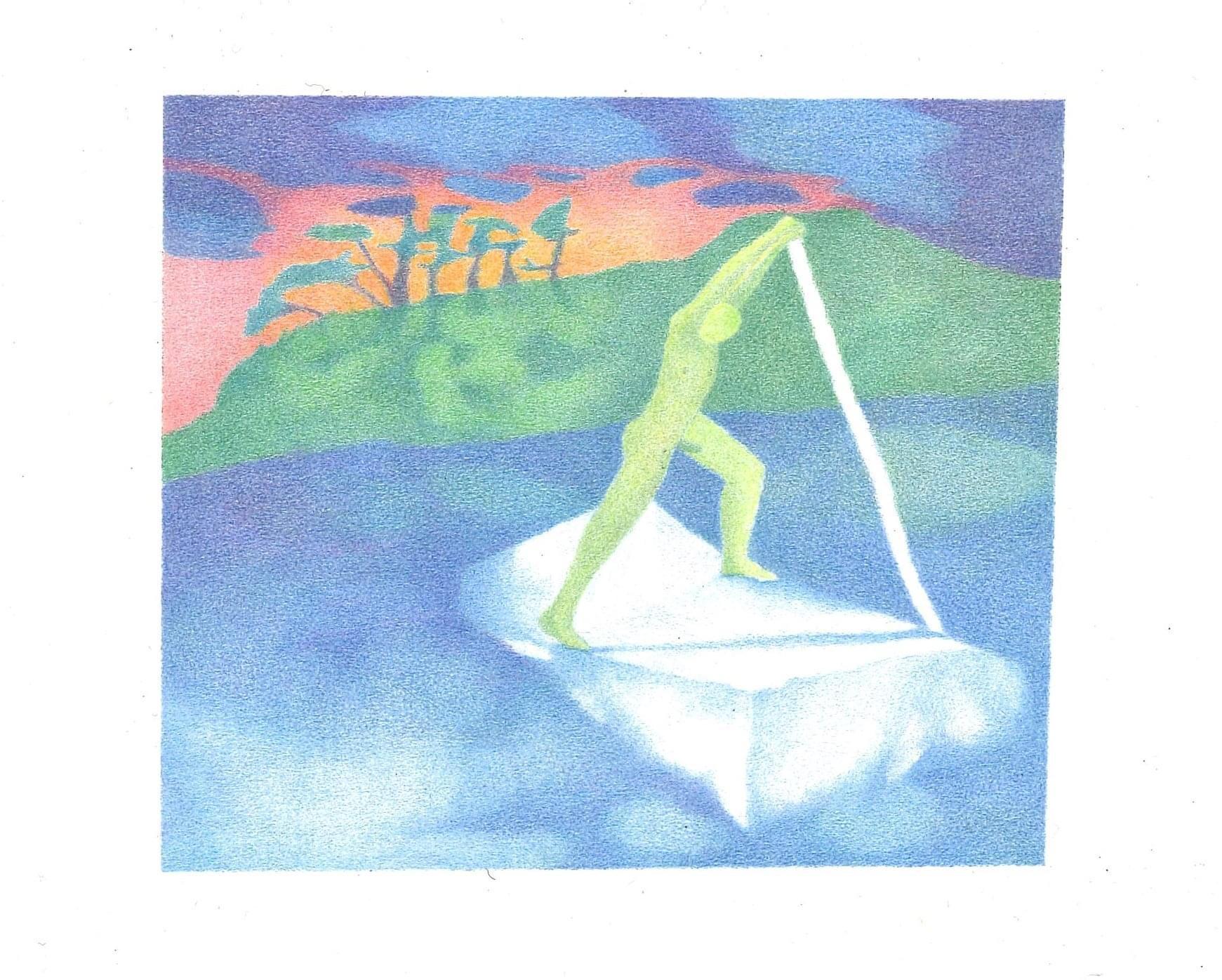
129
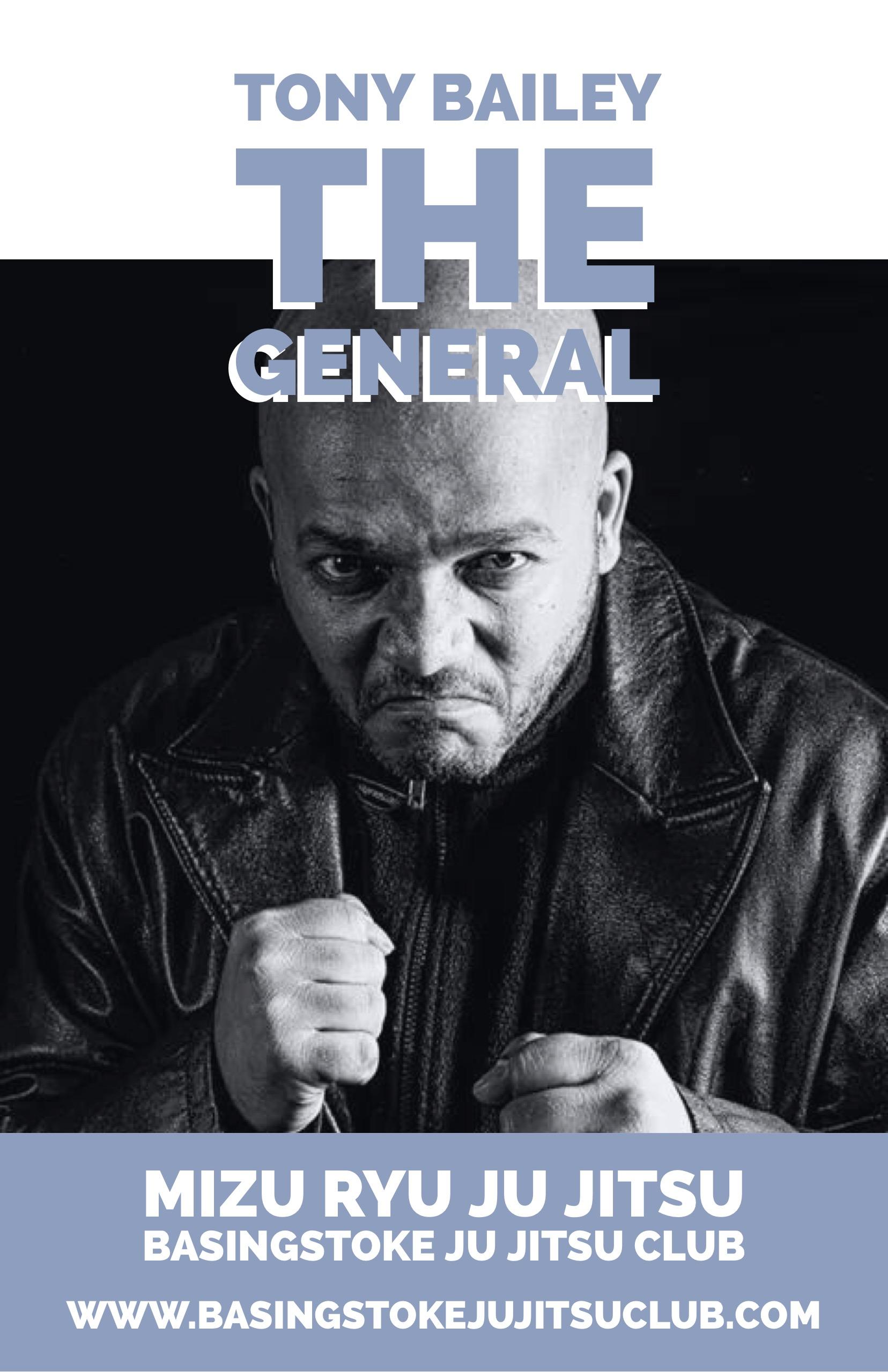
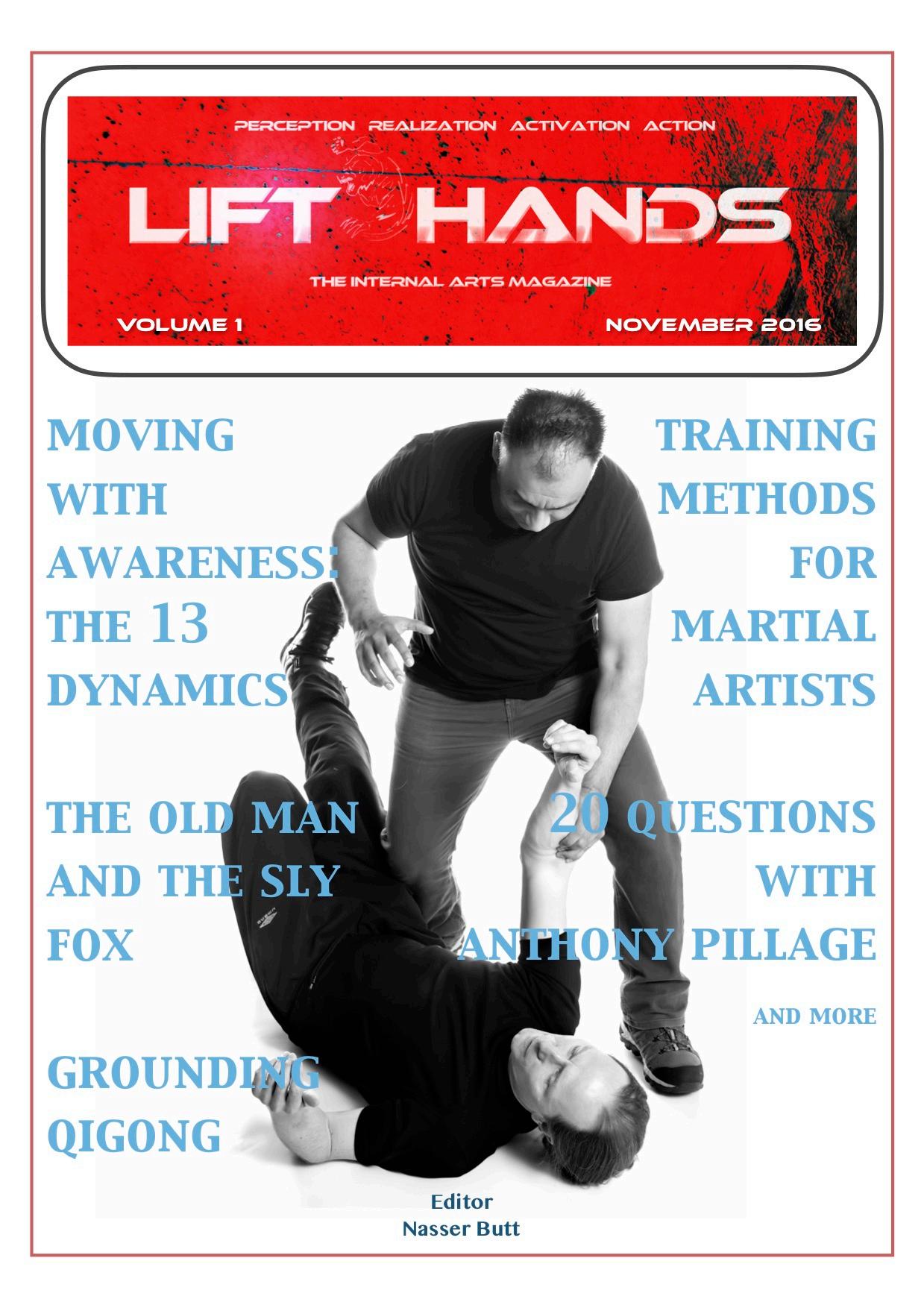


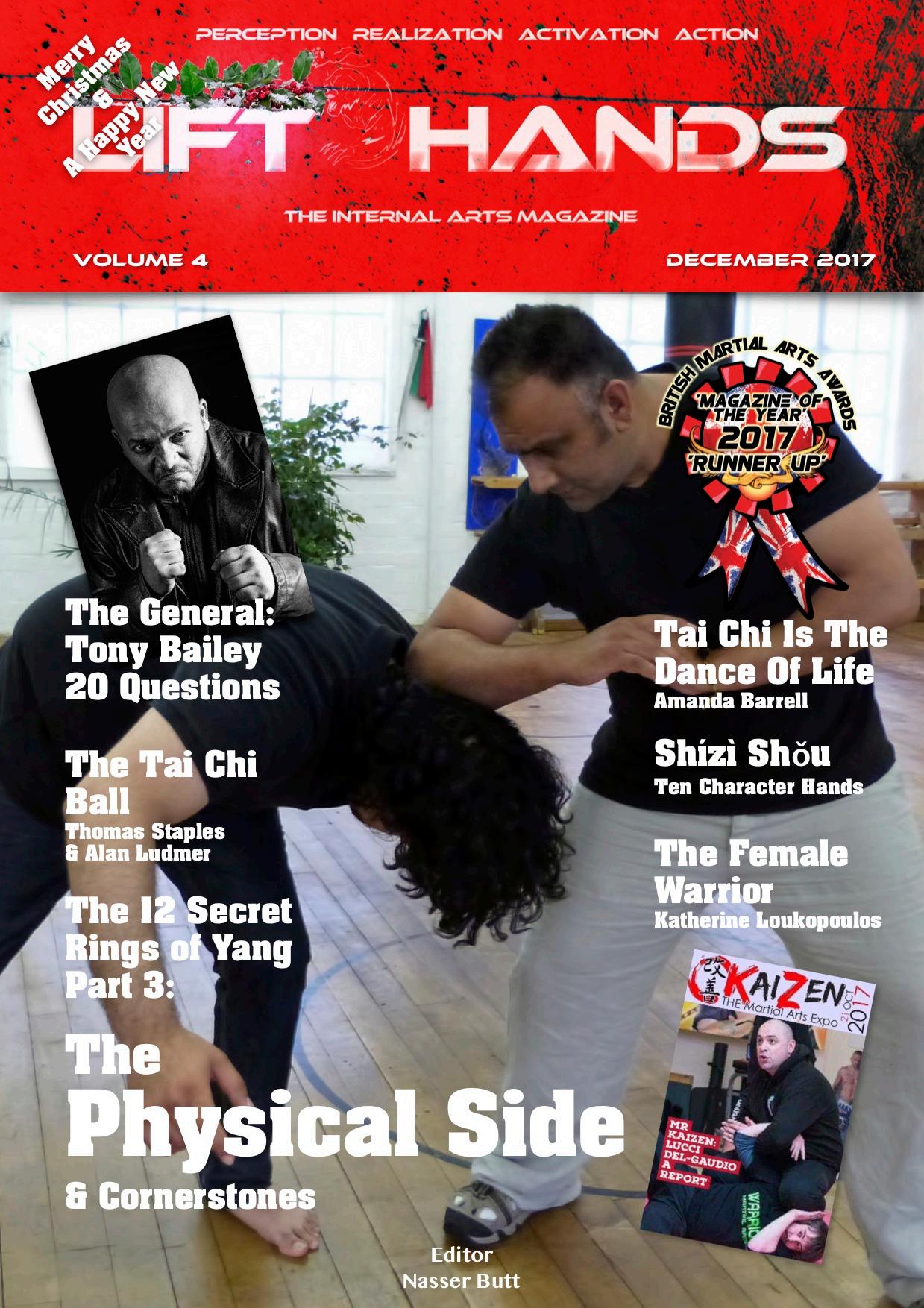




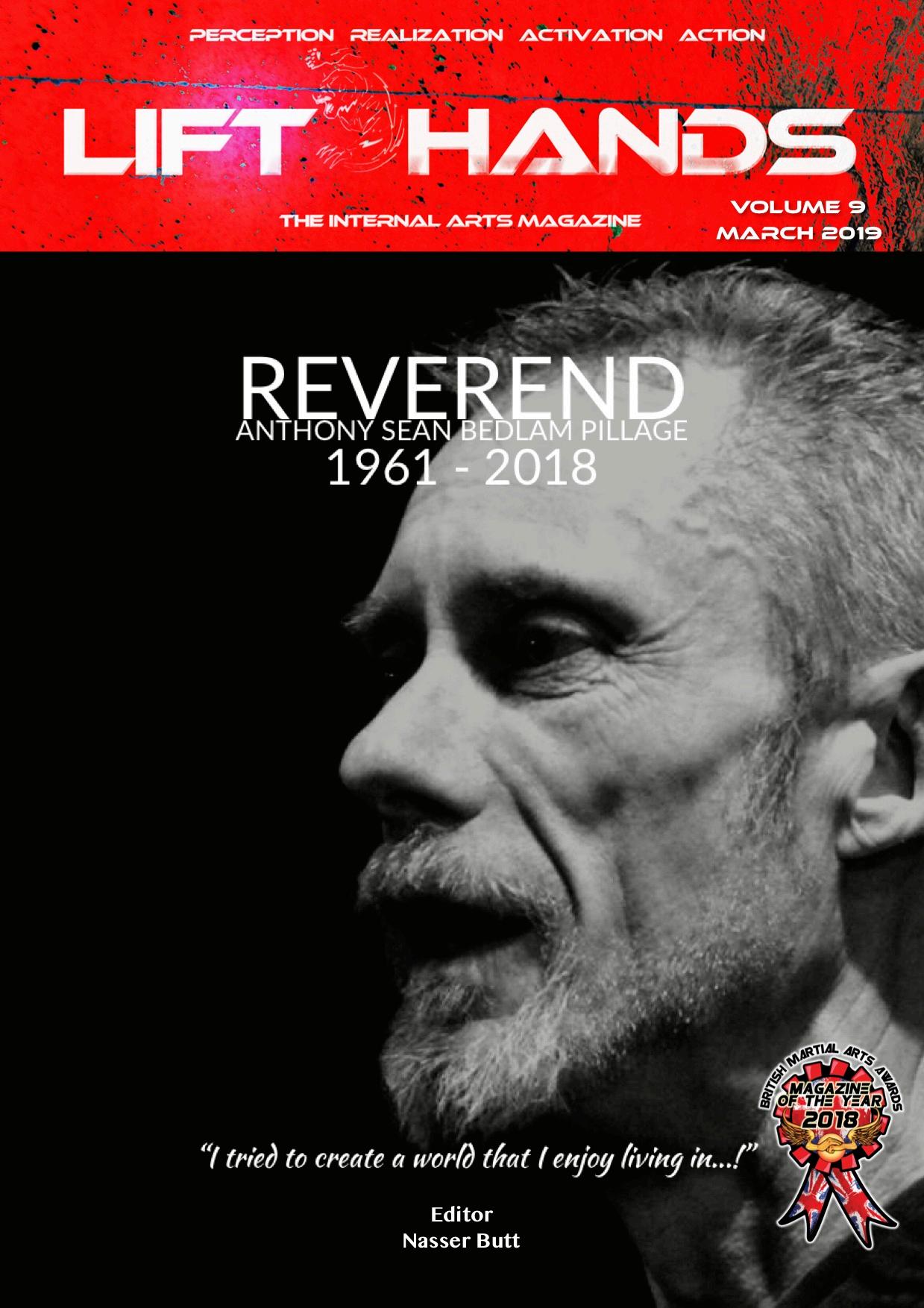

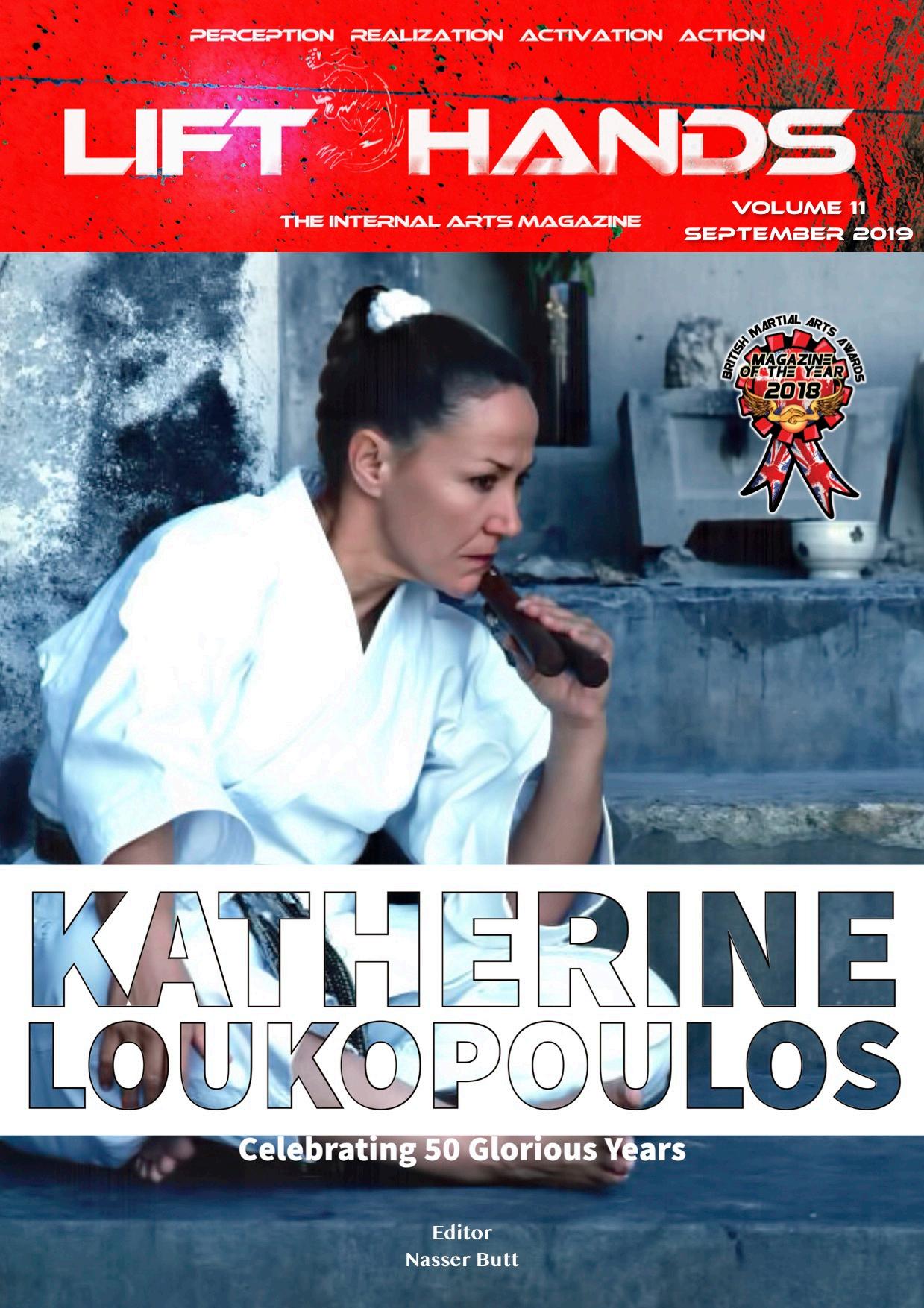
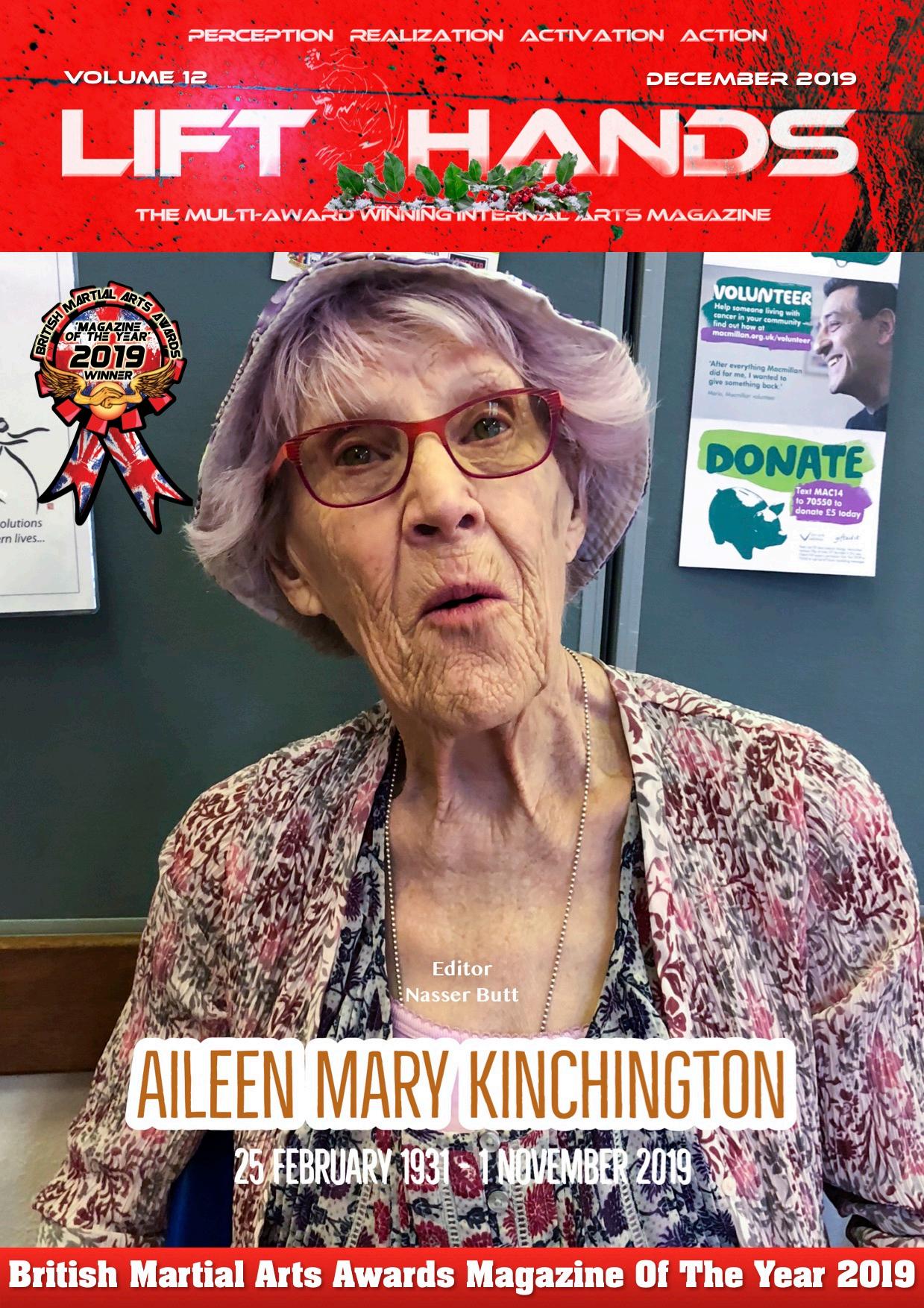


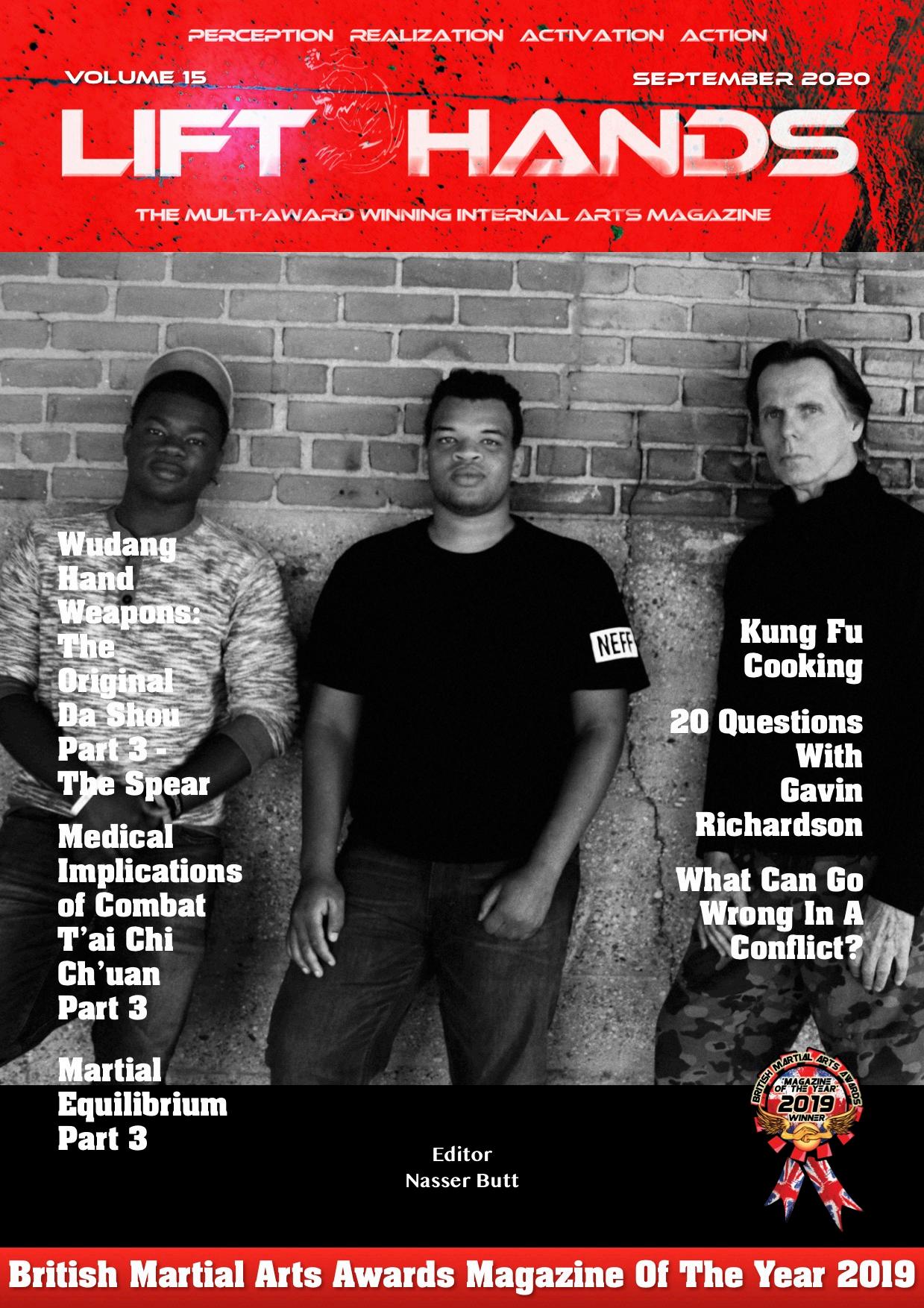


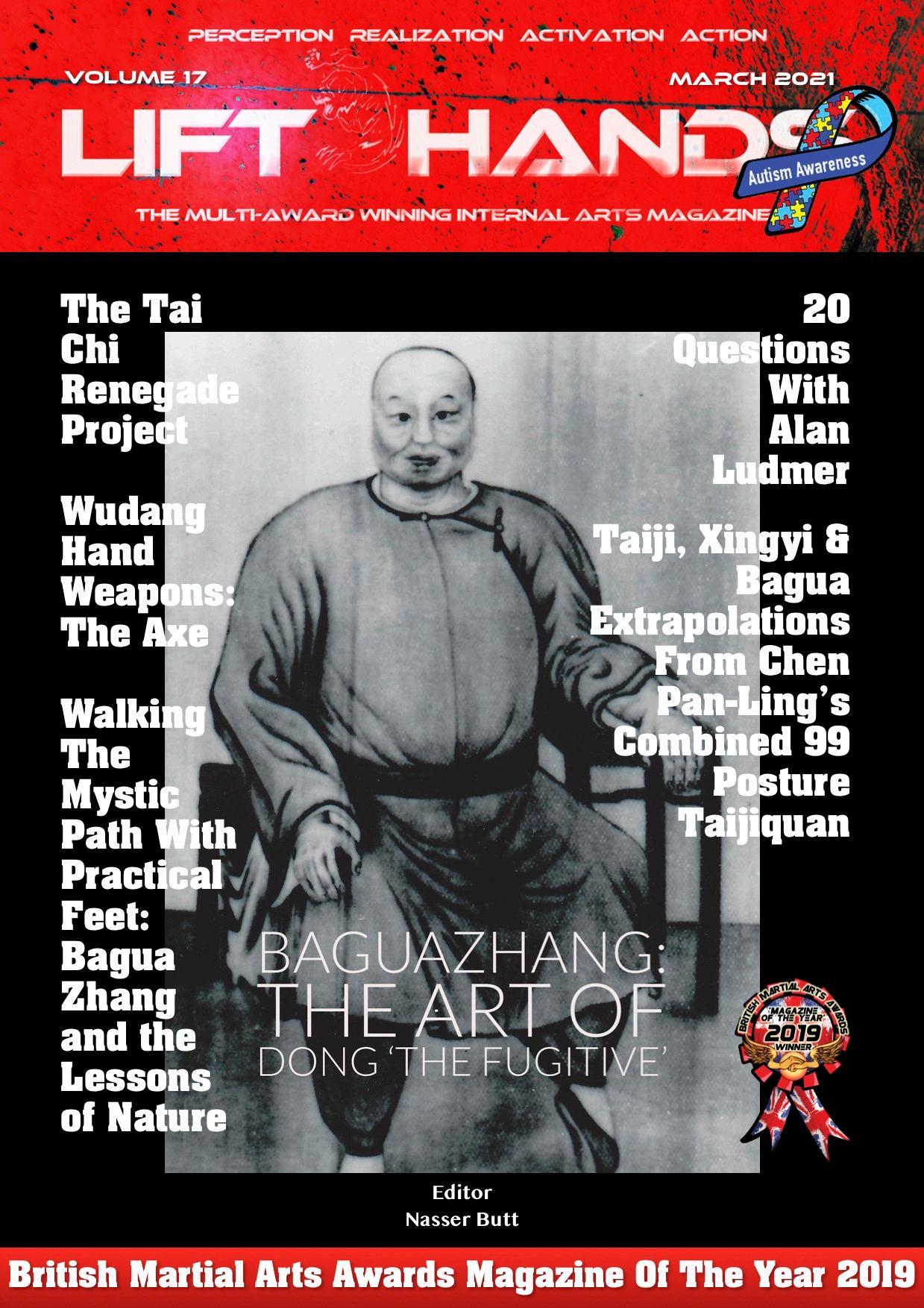



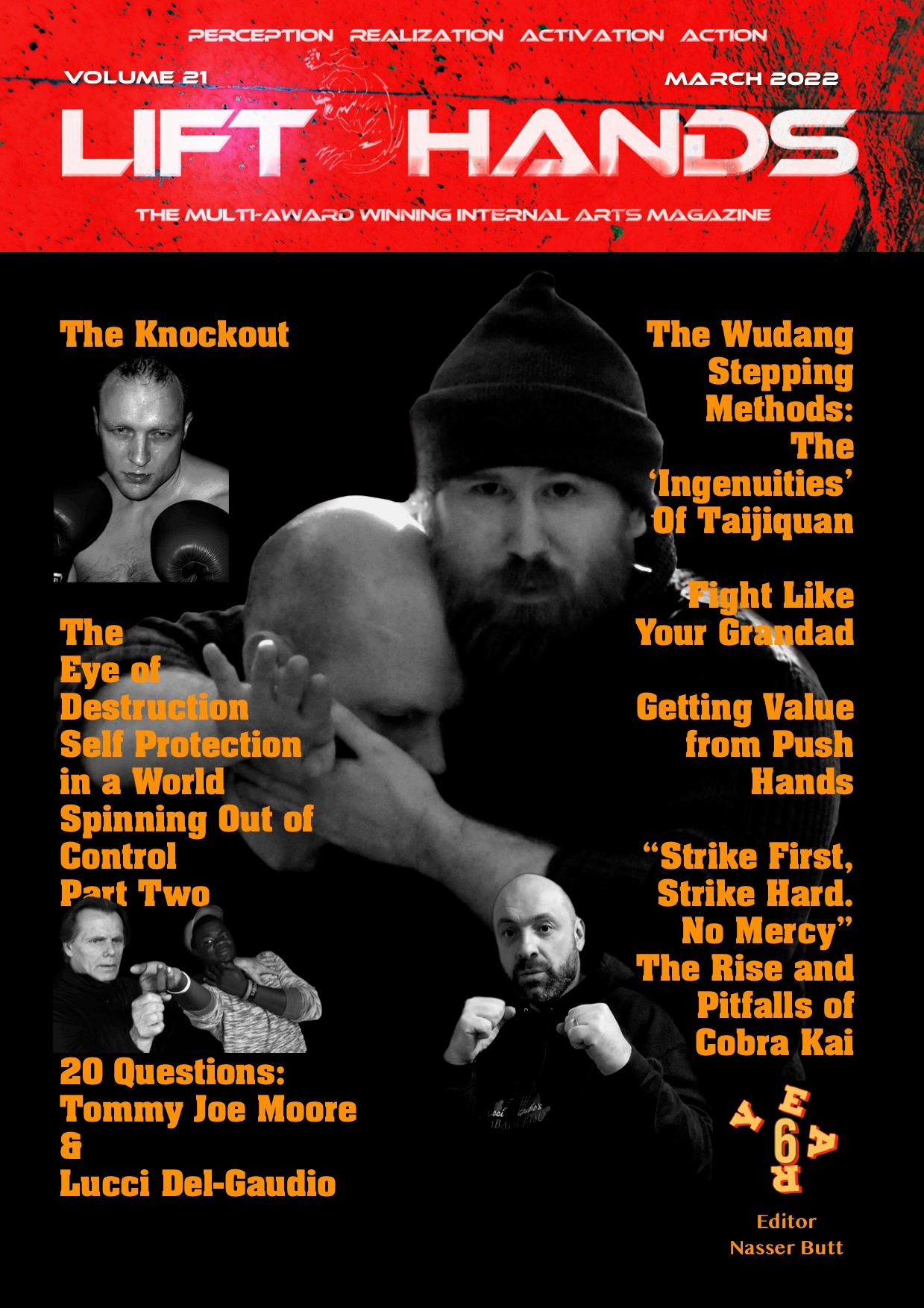
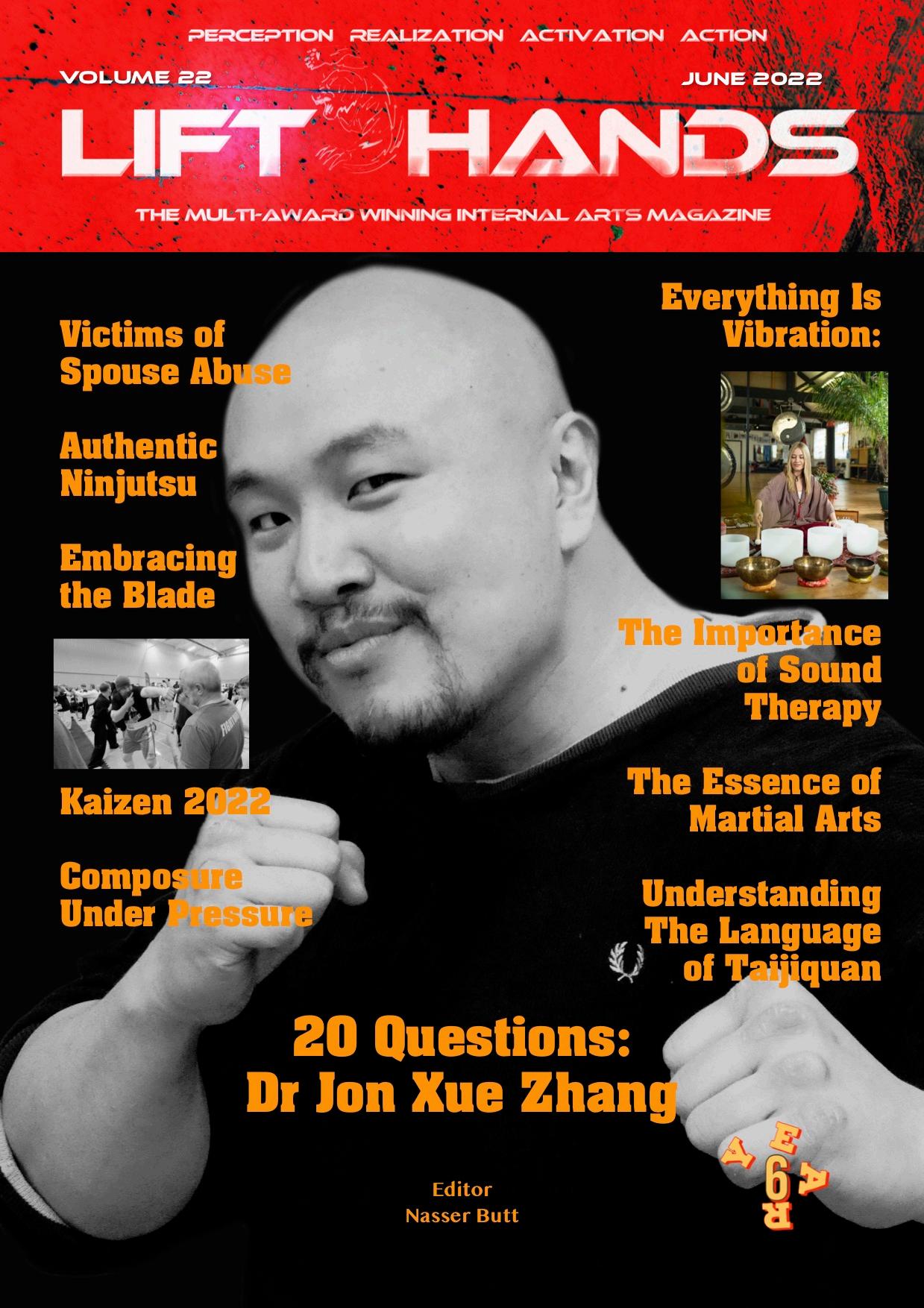
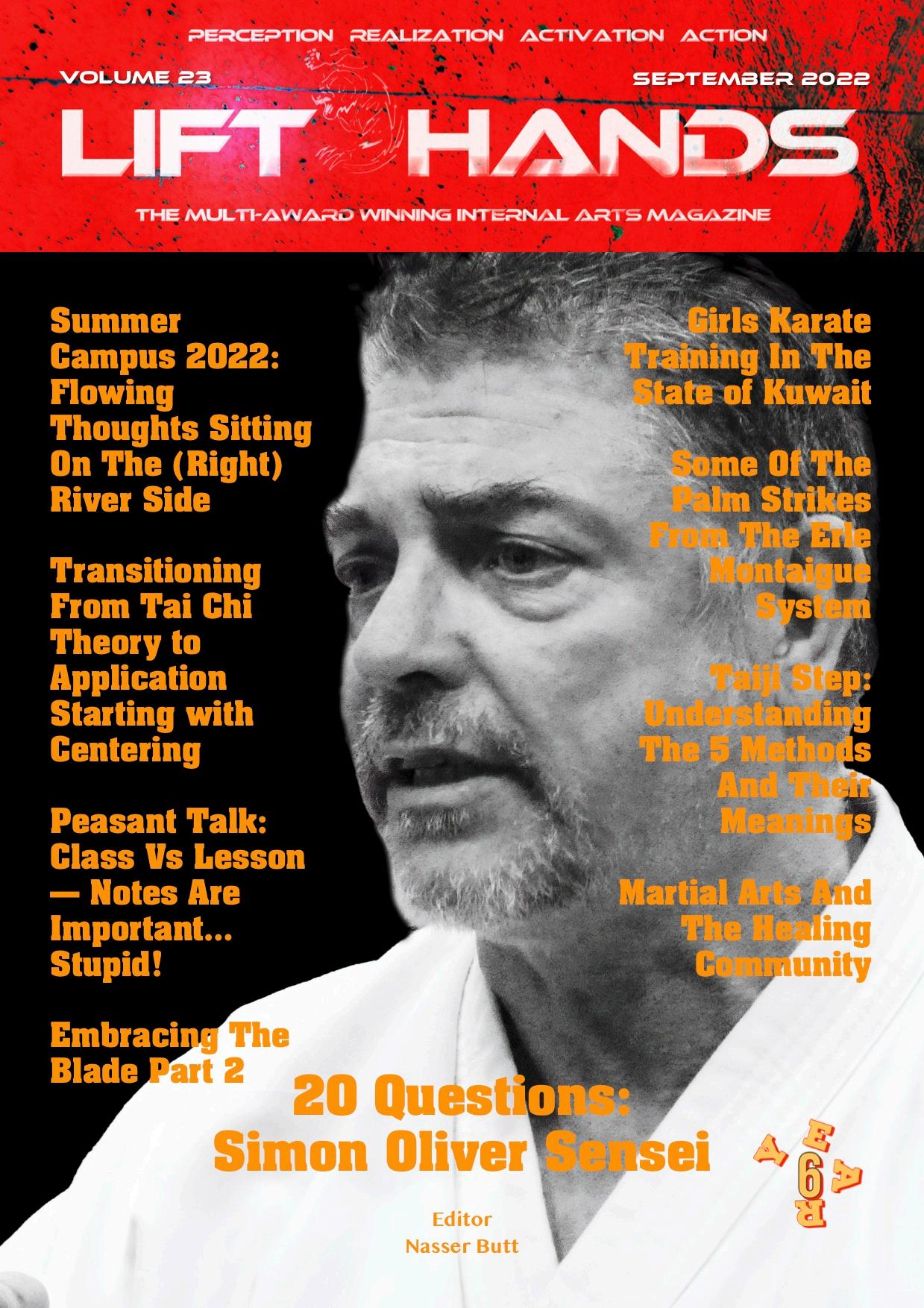
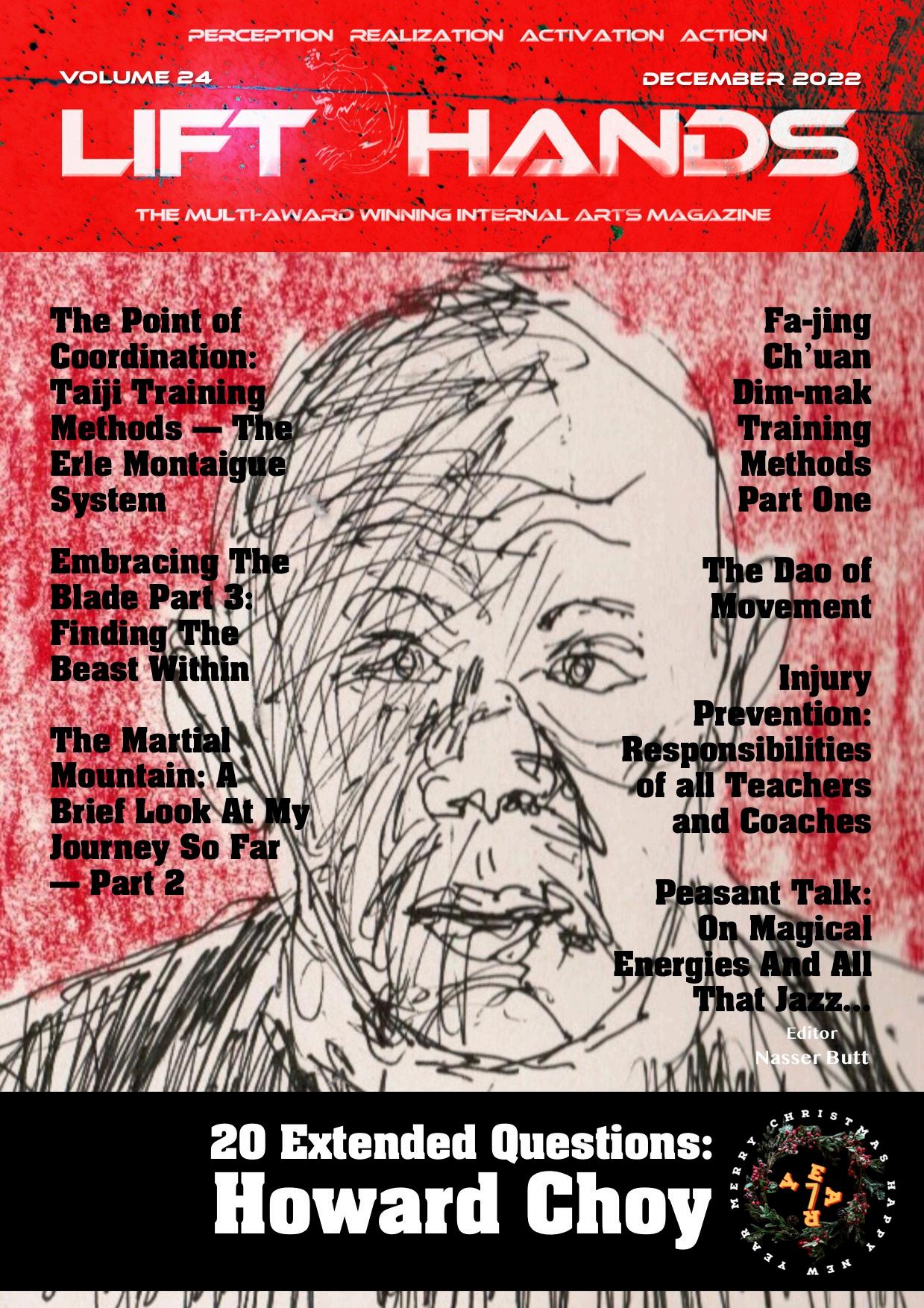
LH1
https://www.peecho.com/print/en/1147432
LH2
https://www.peecho.com/print/en/1147435
LH3
https://www.peecho.com/print/en/1147436
LH4
https://www.peecho.com/print/en/1147437
LH5
https://www.peecho.com/print/en/1147438
LH6
https://www.peecho.com/print/en/1147441
LH7
https://www.peecho.com/print/en/1147442
LH8
https://www.peecho.com/print/en/1147443
LH9
https://www.peecho.com/print/en/1147444
LH10
https://www.peecho.com/print/en/1147445
LH11
https://www.peecho.com/print/en/1147446
LH12
https://www.peecho.com/print/en/1147448
LH13
https://www.peecho.com/print/en/1147451
LH14
https://www.peecho.com/print/en/1147452
LH15
https://www.peecho.com/print/en/1147454
LH16 English Edition
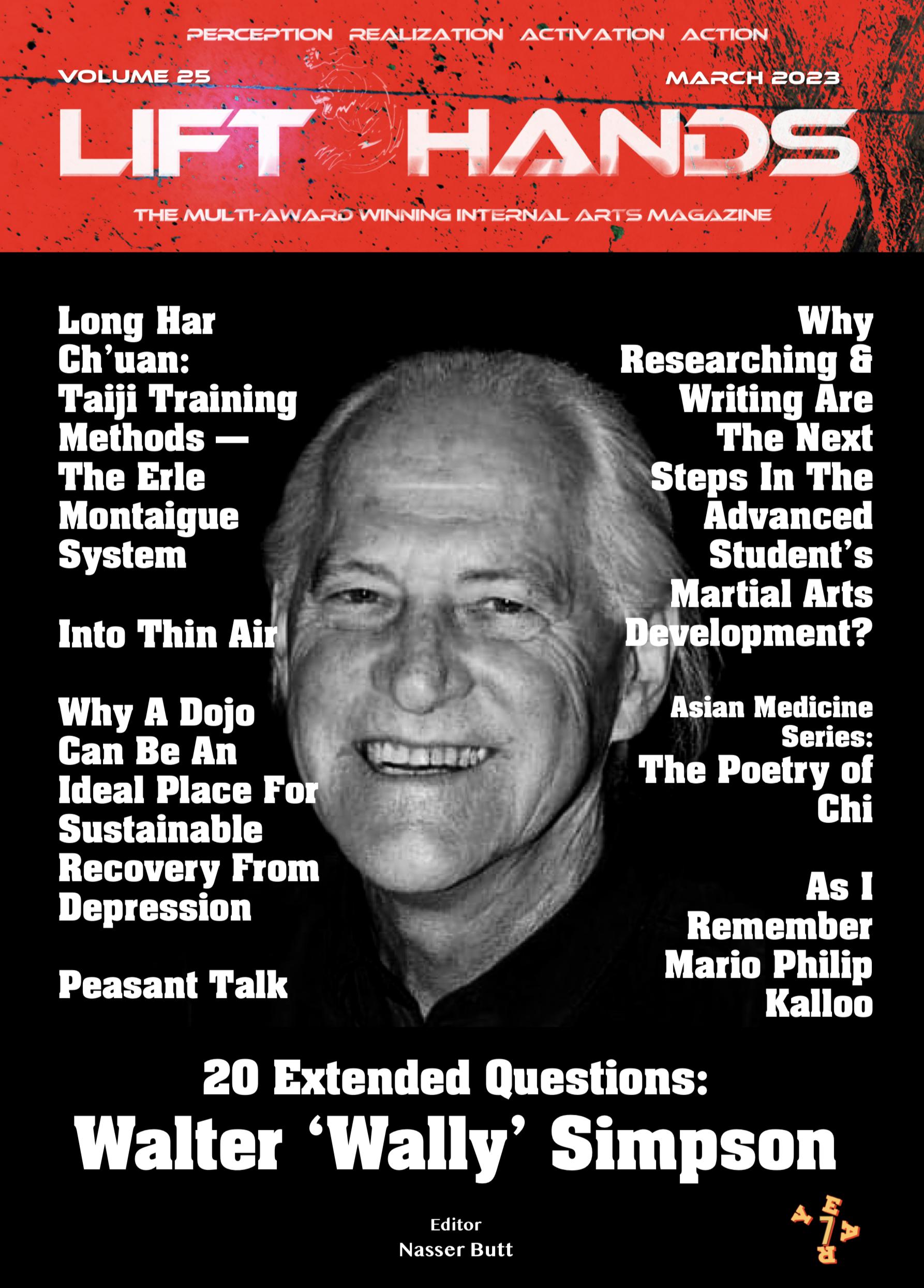
https://www.peecho.com/print/en/1147455
LH16 Italian Edition
https://www.peecho.com/print/en/1147458
LH17
https://www.peecho.com/print/en/1147459
LH18
https://www.peecho.com/print/en/1147464
LH19
https://www.peecho.com/print/en/1147465
LH20
https://www.peecho.com/print/en/1147466
LH21
https://www.peecho.com/print/en/1147469
LH22
https://www.peecho.com/print/en/1147470
LH23
https://www.peecho.com/print/en/1187570
LH24
https://www.peecho.com/print/en/1222229
LH25
https://www.peecho.com/print/en/1257965



132
To purchase your Digital Edition of Lift Hands Magazine please click on the links below or copy and paste them into your browser and follow the online instructions.
133
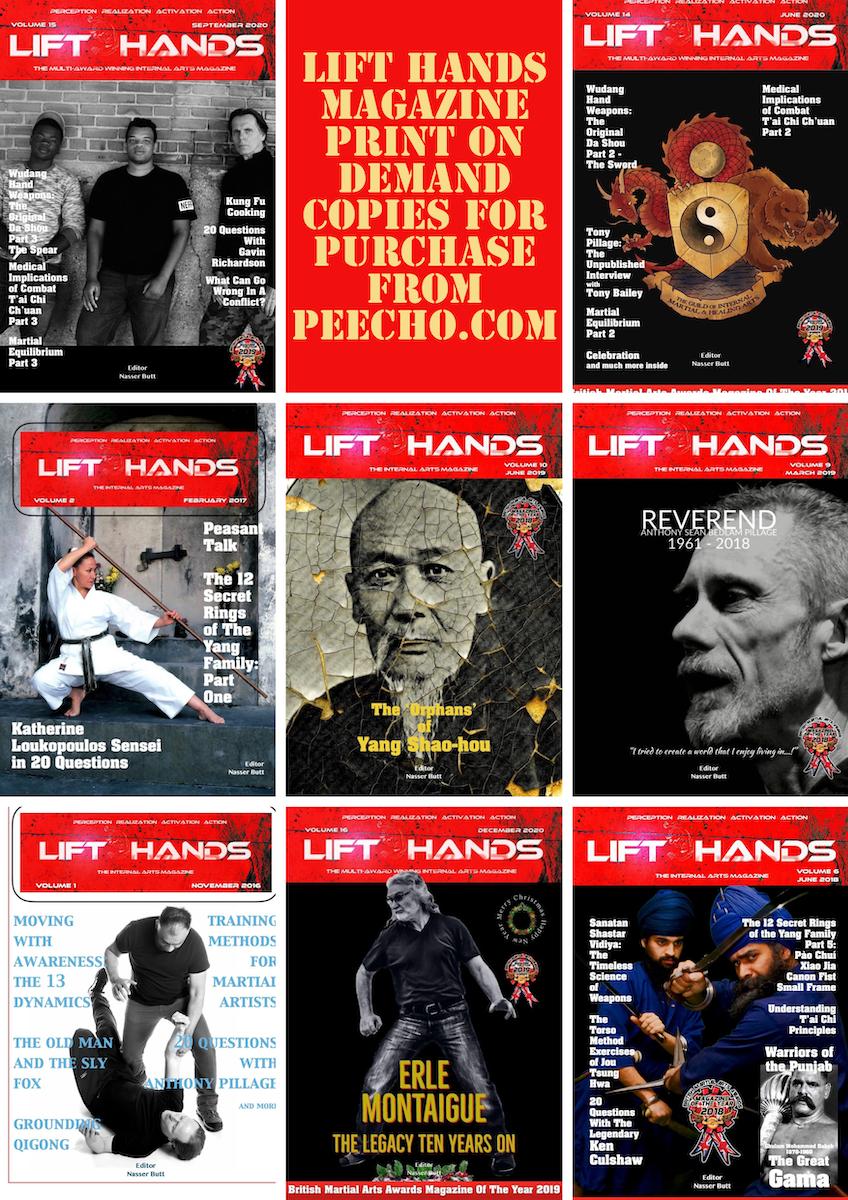







































































































 Figure 32
Figure 33
Figure 34
Figure 35
Figure 36
Figure 39A
Figure 32
Figure 33
Figure 34
Figure 35
Figure 36
Figure 39A







































 ‘Cross Hands’ or ‘Ten Character Hands’ from Taiji Long Boxing.
‘Spear Hands With Sit’ — A variant of ‘Cross Hands’/‘Ten Character Hands’ from Old Yang Style
Step Forward With The Big Dipper Hammer (Seven Stars)
— A variant of ‘Cross Hands’/‘Ten Character Hands’ from Old Yang Style
‘Cross Hands’ or ‘Ten Character Hands’ from Taiji Long Boxing.
‘Spear Hands With Sit’ — A variant of ‘Cross Hands’/‘Ten Character Hands’ from Old Yang Style
Step Forward With The Big Dipper Hammer (Seven Stars)
— A variant of ‘Cross Hands’/‘Ten Character Hands’ from Old Yang Style
















































































 Monica Mitoli — Chief Instructor Bari
Monica Mitoli — Chief Instructor Bari




















































































